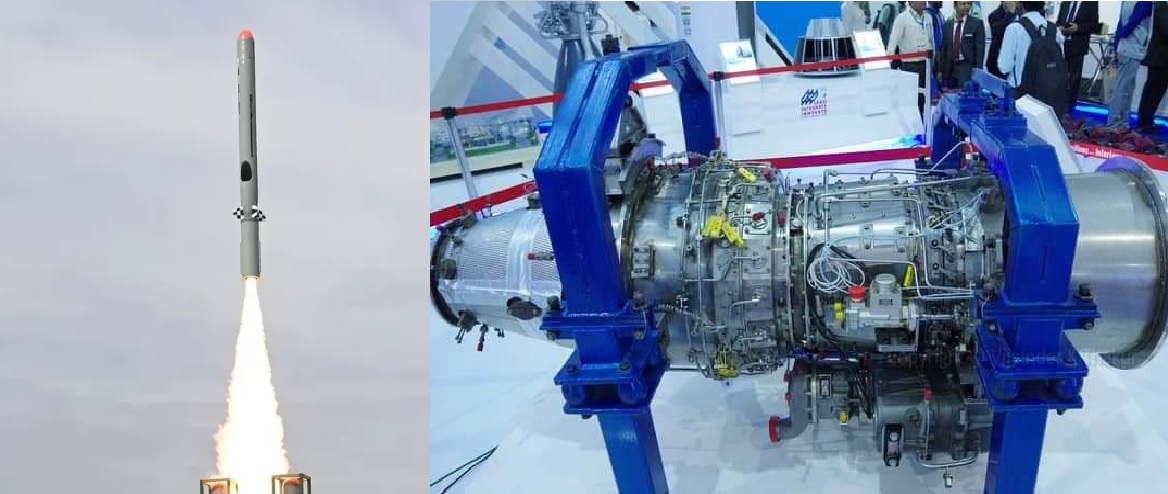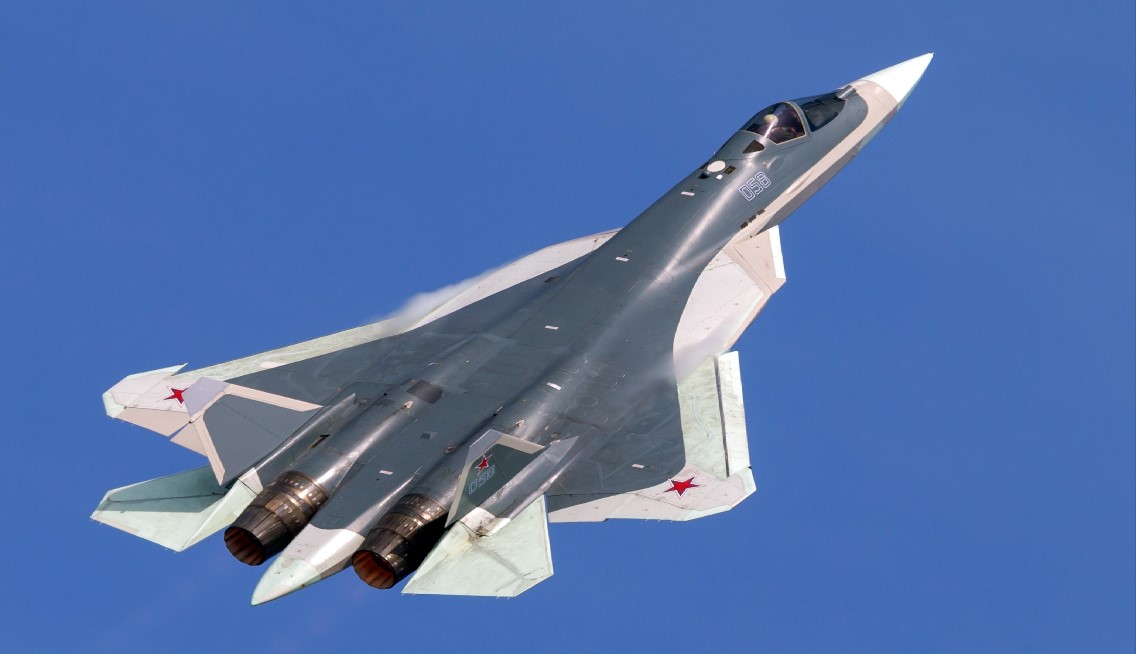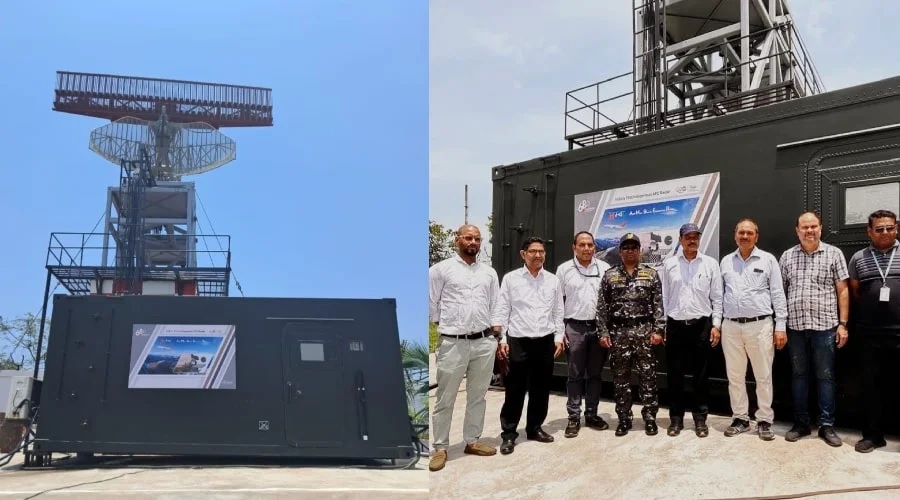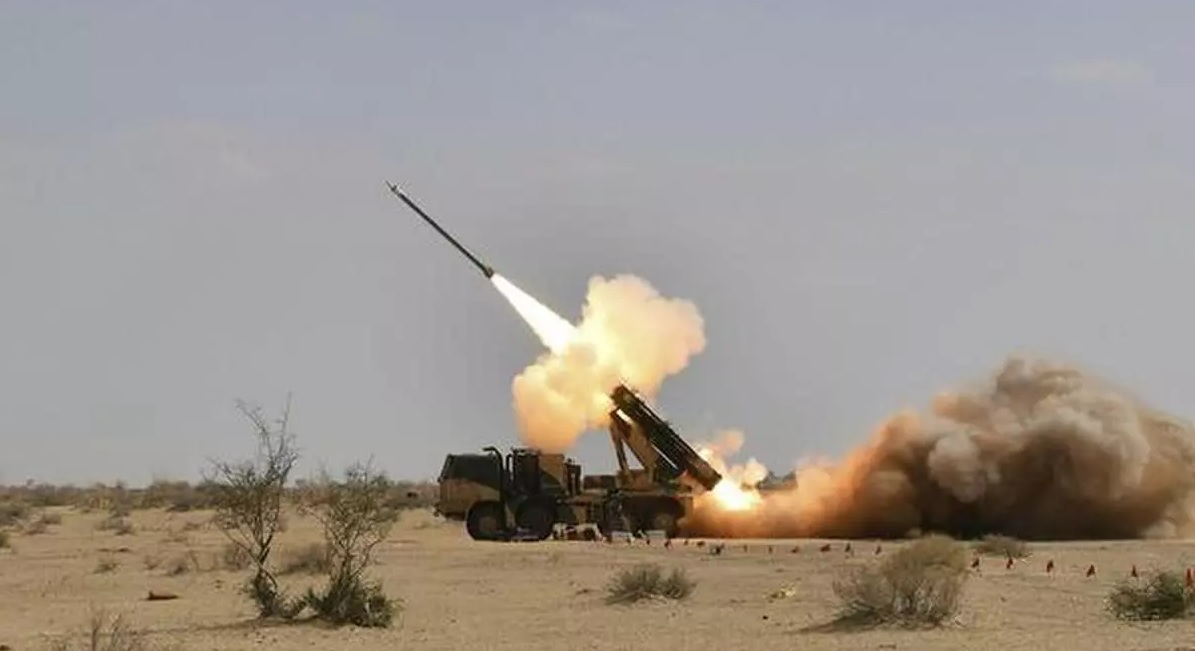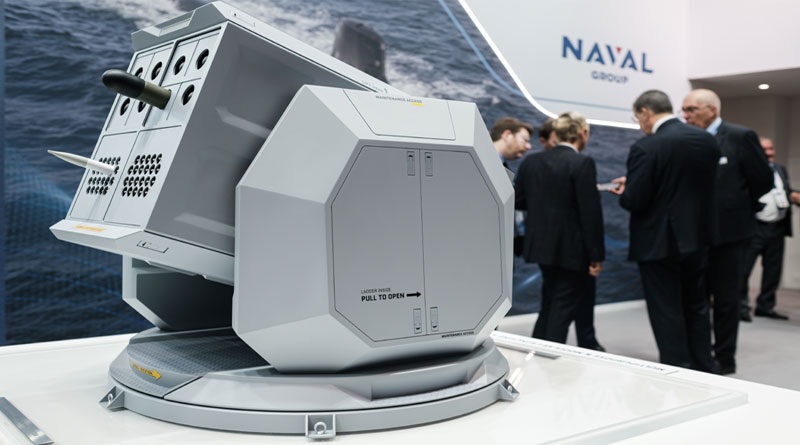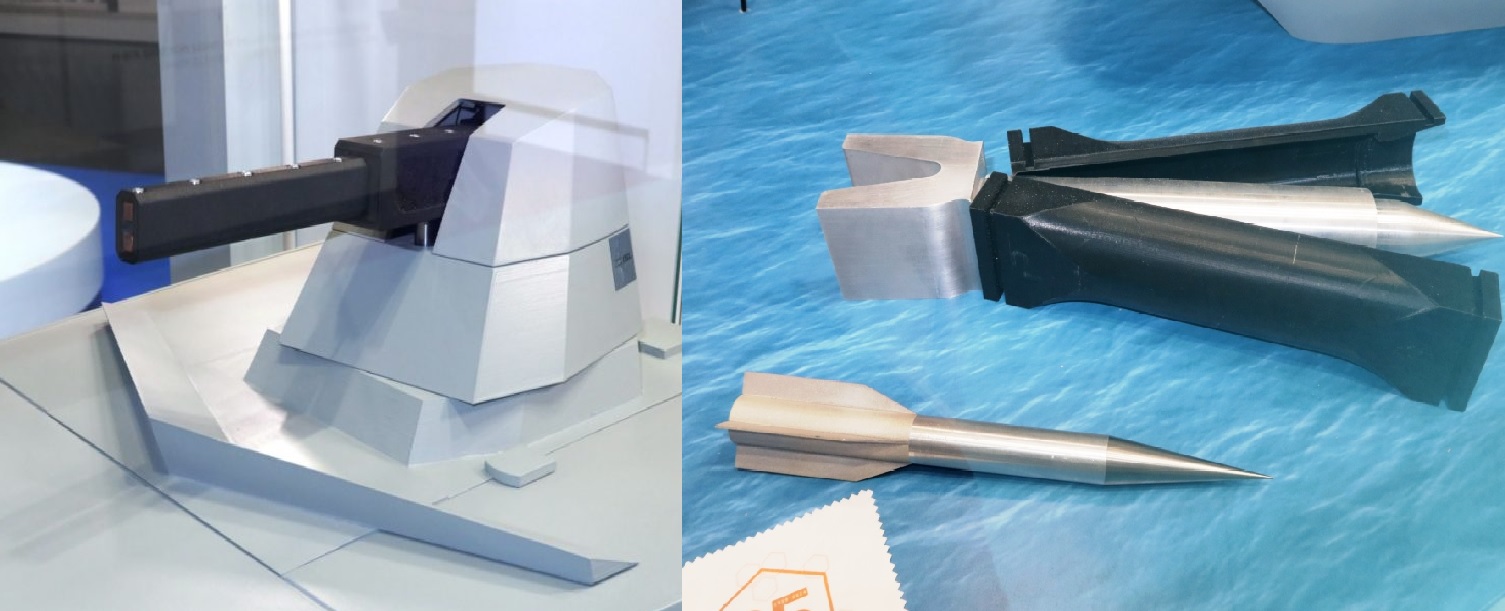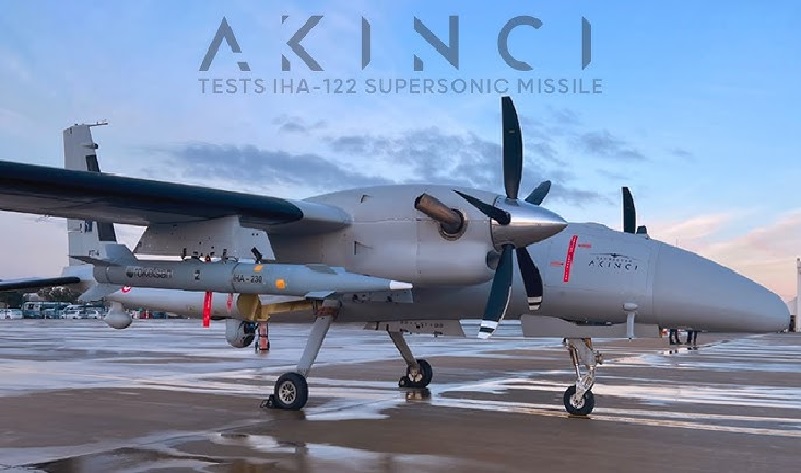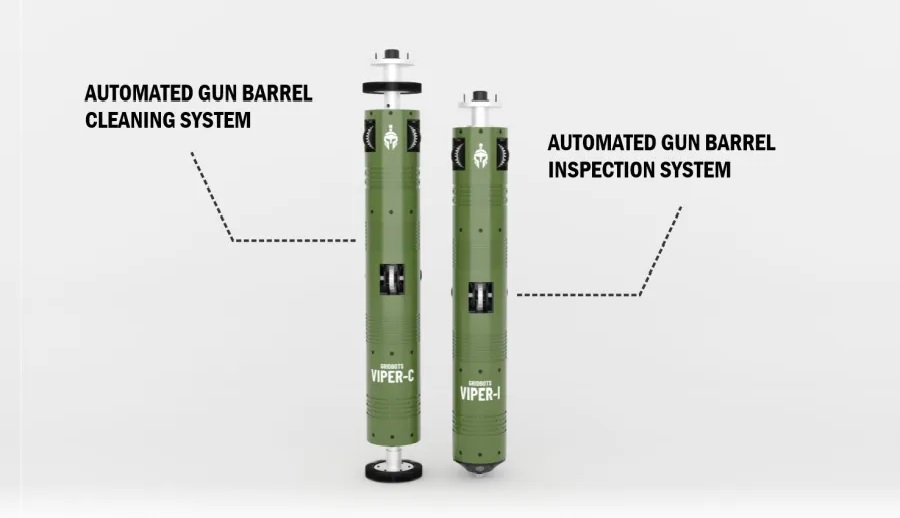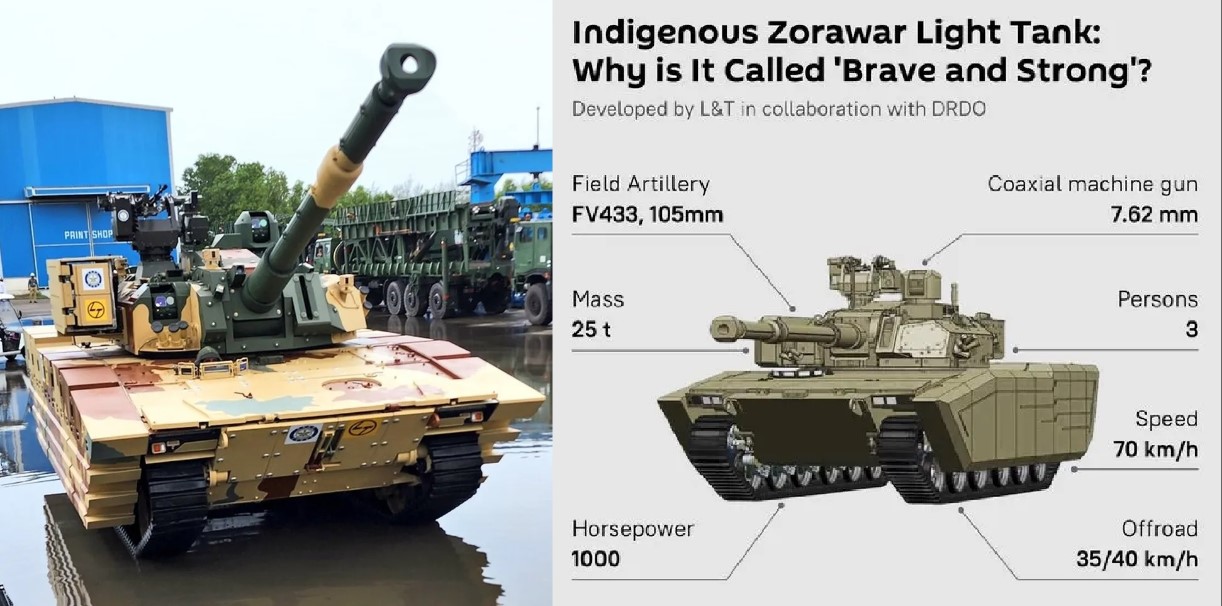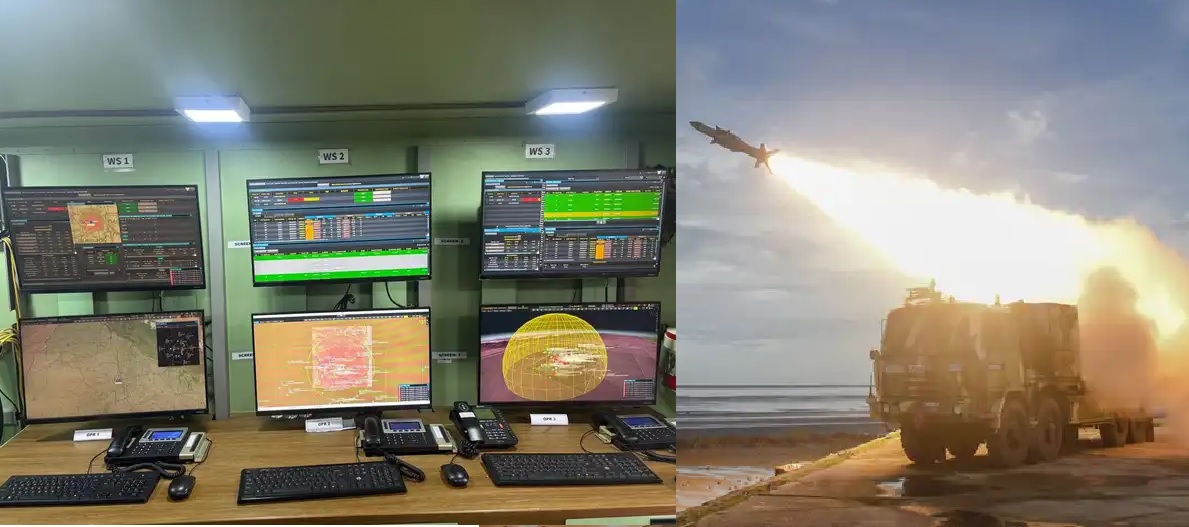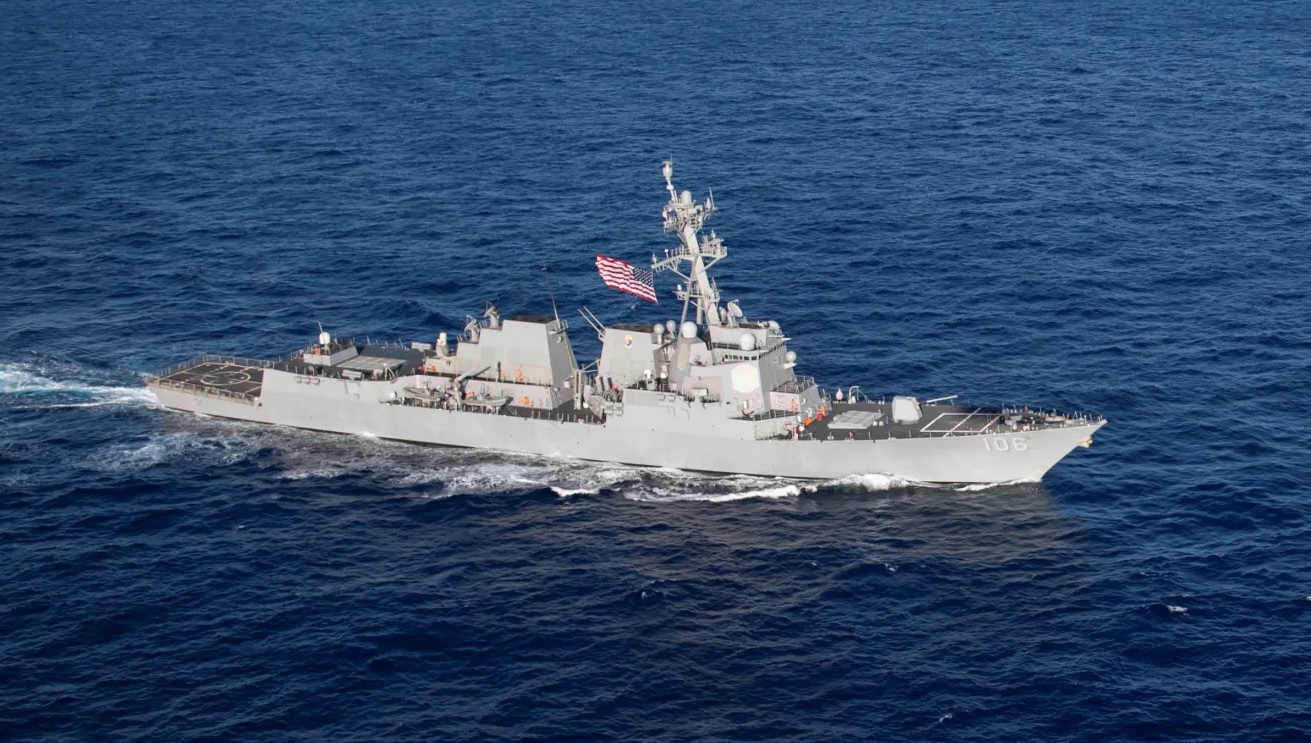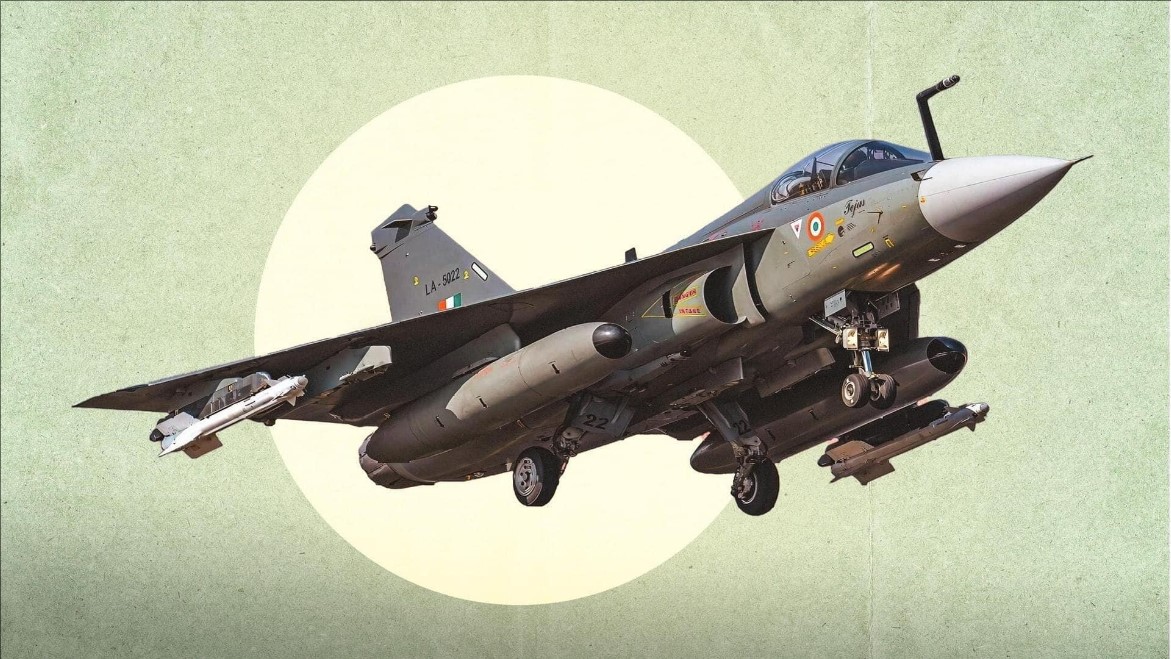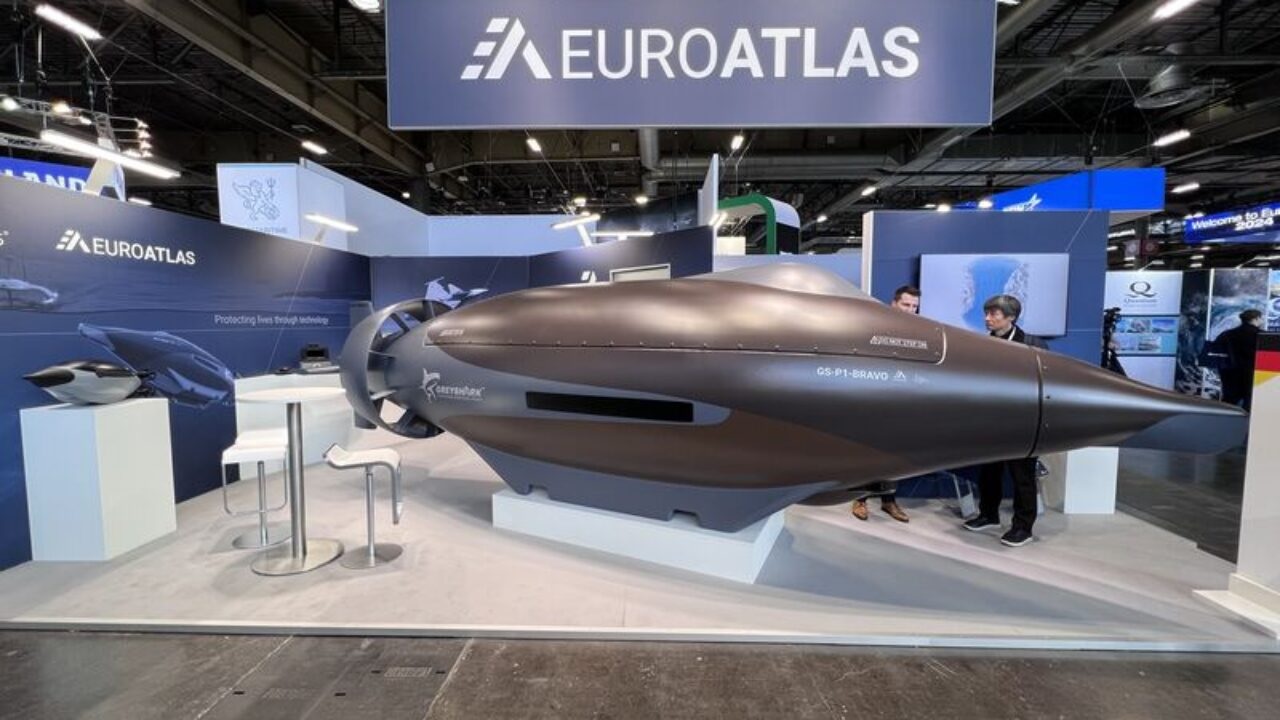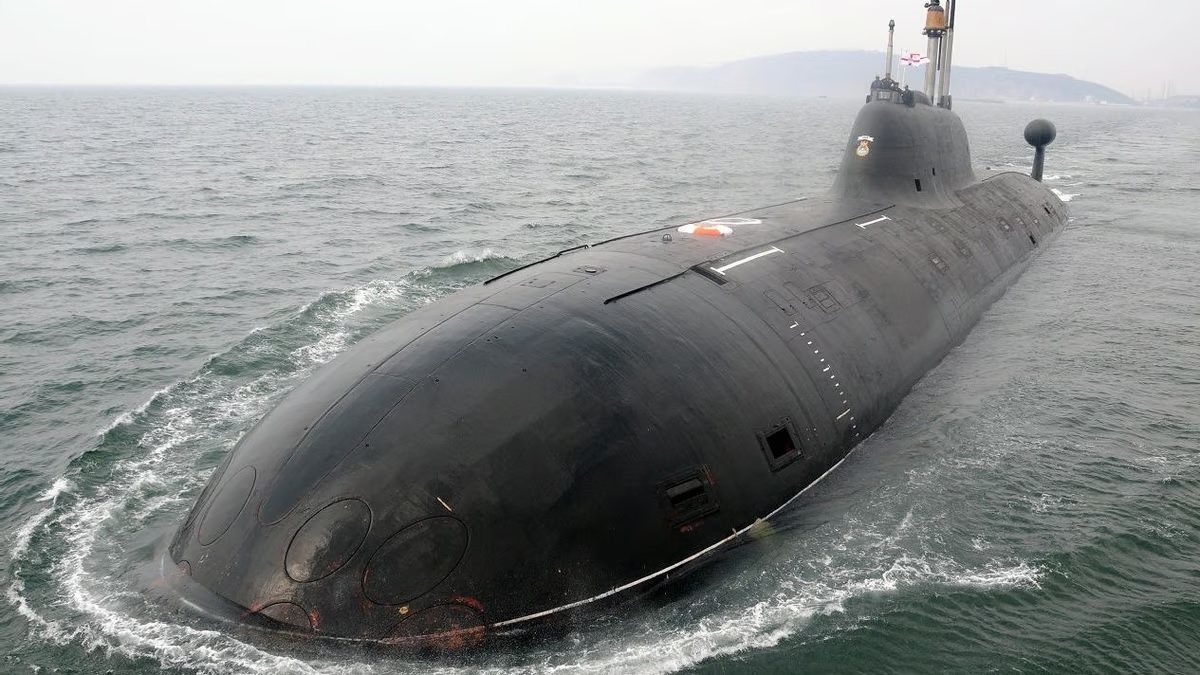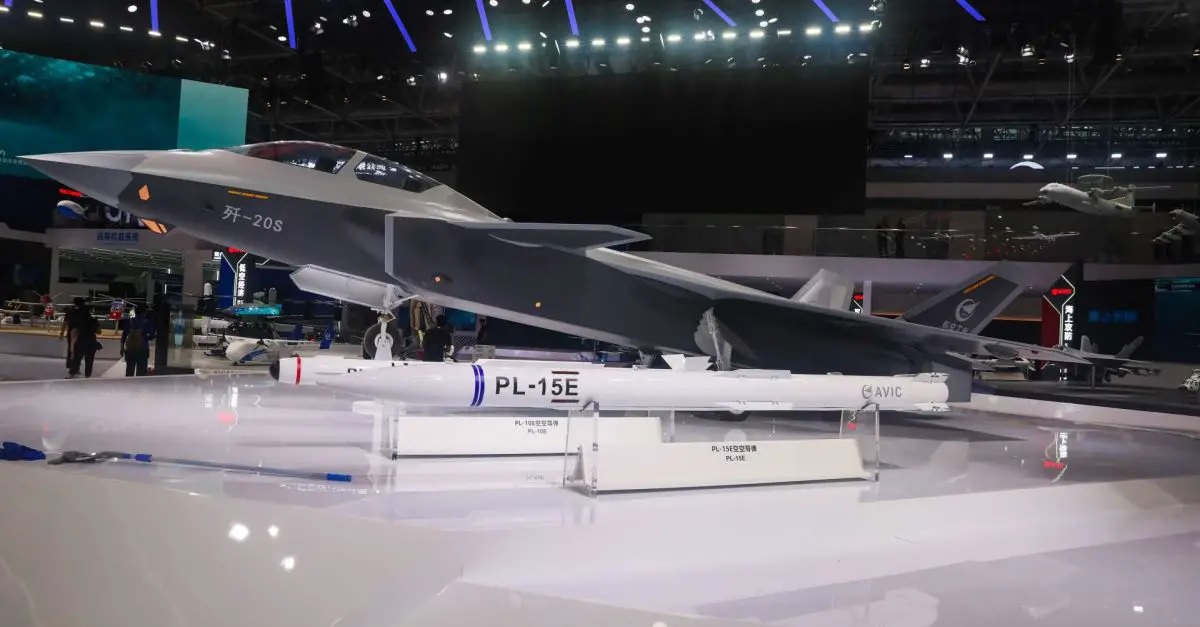India
India’s Ghatak Unmanned Combat Aerial Vehicle (UCAV) program stands as a milestone in the country's pursuit of self-reliant defense technology. Developed by the Aeronautical Development Establishment (ADE) under the Defence Research and Development Organisation (DRDO), the Ghatak UCAV is designed as a stealthy, autonomous combat platform. With an emphasis on deep-strike capabilities, this futuristic aircraft is powered by the indigenous 49kN Dry Kaveri engine, a product of years of research and commitment to indigenous aerospace development. Yet, the idea of scaling up the Ghatak UCAV into a full-fledged manned bomber is not only a fascinating concept but also a technically complex undertaking.At the heart of the Ghatak UCAV’s development lies a stealthy, tailless flying-wing design, validated through ADE’s SWiFT (Stealth Wing Flying Testbed) demonstrator. Weighing in at 1.1 tons, the SWiFT provided crucial insights into stealth technology, flight control mechanisms, and aerodynamic principles. The Ghatak itself has since evolved into a more formidable 13-ton UCAV, designed for carrying precision-guided munitions and executing autonomous offensive missions. Its performance as an unmanned platform is already impressive, but the question remains: Can this technology be scaled up to create a manned, stealth bomber capable of significantly expanding India’s aerial strike capabilities?The first technical challenge in such a transformation revolves around weight and structural integrity. A manned version of the Ghatak would demand substantial reinforcements to support the cockpit, pilot control systems, life-support mechanisms, and ejection seats. Simply adding these elements could increase the platform's weight by an estimated 2-3 tons. Additional structural enhancements to ensure safety and operational stability might add another 1-2 tons. All this could push the aircraft's Maximum Take-Off Weight (MTOW) to around 20-25 tons, considerably more than the current 13-ton UCAV.Adapting the Ghatak’s current air intake system also poses a significant challenge. The existing front-center intake design, while effective for a UCAV, is not optimal for a manned bomber that needs to maximize stealth and aerodynamic efficiency. Instead, adopting side intakes, similar to those on the B-2 Spirit stealth bomber, would likely be necessary to maintain a low radar cross-section and ensure adequate airflow to the engines. This modification, however, would involve substantial redesigns of the airframe, increasing both complexity and cost.Moreover, a bomber's role demands far more than just structural upgrades. Advanced avionics for navigation, targeting, and electronic warfare (EW) capabilities would need to be integrated, allowing the aircraft to perform strategic strike missions while defending against sophisticated enemy systems. To carry a variety of payloads, from guided bombs to standoff missiles, the aircraft would also require a modular internal bomb bay. These features, while enhancing the bomber’s strategic potential, would significantly add to the overall weight and necessitate further engineering efforts to maintain the airframe's stealth profile.The engine requirements for this scaled-up bomber version are another key hurdle. The Dry Kaveri engine, delivering 49kN of thrust, is suitable for the 13-ton Ghatak UCAV but falls short for a heavier, 20-25 ton manned platform. A bomber generally needs a thrust-to-weight ratio (TWR) ranging between 0.3 to 0.5 to ensure a balance between performance, range, and payload capacity. For an MTOW of 25 tons, this translates to a thrust requirement of between 73.5 kN (low-end) and 122.5 kN (high-end). The most plausible engine solution could be the 110 kN engine being developed for the Advanced Medium Combat Aircraft (AMCA), which could offer around 75 kN of dry thrust. Alternatively, a twin-engine configuration using two Dry Kaveri engines, producing a combined 98 kN thrust, could be explored, though this would necessitate a comprehensive redesign of the airframe, potentially compromising its stealth features.Integrating these propulsion upgrades is no simple task. A dual-engine configuration, while providing the necessary thrust, would complicate engine integration, exhaust management, and thermal signature suppression. Meanwhile, the airframe would need meticulous redesigning to accommodate these engines without undermining the platform’s stealth characteristics. Even with a single, more powerful engine, engineers would face challenges in balancing the aircraft's center of gravity, aerodynamics, and flight stability.Despite these obstacles, the concept of a manned Ghatak-derived bomber holds considerable promise for India's defense capabilities. With the right investments and technological advancements, a compact, stealthy bomber could be developed to meet the country's strategic needs. However, the transition from an unmanned UCAV to a manned bomber would be a long, expensive process requiring breakthroughs in propulsion, materials science, and stealth technology.In conclusion, scaling the Ghatak UCAV into a manned bomber platform is technically feasible but demands extensive modifications in design, propulsion, and avionics. While the endeavor is ambitious, the strategic advantages of a domestically developed, stealthy manned bomber could justify the investment, providing India with a significant edge in aerial warfare and long-range strike capabilities. Nonetheless, the path forward will require a comprehensive engineering effort and a substantial increase in funding to realize this ambitious vision.
Read More → Posted on 2024-11-14 15:24:44World
The race to advance unmanned combat technology for the United States Air Force took a crucial leap forward as Anduril Industries and General Atomics Aeronautical Systems (GA-ASI) announced the successful completion of their Critical Design Reviews (CDR) for their Collaborative Combat Aircraft (CCA) concepts. This significant milestone means the designs are now considered mature and ready for the next stages of rigorous testing, as both companies are striving to achieve operational deployment by the end of the decade.Timothy Helfrich of the Air Force Materiel Command confirmed the CDR completion, emphasizing that the Air Force’s CCA program remains on schedule. "Both industry teammates are on track to enable first flights soon, setting the stage for real operational capability before this decade concludes," Helfrich shared at a defense forum.The Technology in FocusAnduril has put forth its ambitious multi-mission Group 5 unmanned aerial system, known as Fury. This drone stands out for its blend of artificial intelligence (AI) and machine learning capabilities. Anduril’s proprietary Lattice software lies at the core, empowering the drone to process data dynamically and make autonomous decisions on the fly. The system is designed to collaborate seamlessly with manned aircraft, performing missions ranging from reconnaissance to electronic warfare, all while adapting to real-time battlefield conditions.On the other hand, GA-ASI has proposed a variant from its established Gambit family of drones, renowned for their impressive endurance and advanced operational capabilities. These drones aim to function as critical assets in distributed air combat networks, working closely with next-generation fighter jets. GA-ASI claims that these drones are primed to be highly versatile, whether acting as sentinels, electronic attack platforms, or even first responders in contested airspace. The company's design aligns with the Air Force’s vision of integrating autonomous drones with manned jets to maximize mission success.Path to DeploymentThis CDR accomplishment follows a fiercely competitive phase earlier in the year, where Anduril and GA-ASI were selected over industry titans like Lockheed Martin, Boeing, and Northrop Grumman for the program's first increment. By securing their places in this ambitious multi-billion-dollar initiative, both companies are eyeing first flights soon, as well as potential mass deployment by the late 2020s. The Air Force has laid out plans for initial CCA fielding, with the aim to deploy a fleet that could number up to 1,000 drones. A significant competitive decision for large-scale production is expected by the 2026 fiscal year.While the CCA program also has a strong focus on developing advanced autonomous software, the hardware designs are crucial. Each drone concept must complement the evolving landscape of next-generation warfare. The idea isn't just about deploying drones but creating a cohesive system that enhances the effectiveness and survivability of manned aircraft. The stakes are high, with the military betting on companies like Anduril and GA-ASI to break new ground. According to Brian Schimpf, CEO of Anduril, this achievement demonstrates a move toward faster, scalable autonomous solutions, stressing the program's importance for modernizing air combat. Meanwhile, GA-ASI President David Alexander underscored their legacy of advancing unmanned systems and delivering efficient, combat-ready platforms.As these drone wingmen edge closer to reality, the vision of future combat scenarios—where AI-driven drones act as agile, smart allies to human pilots—is becoming less of a concept and more of a tangible, strategic reality. The coming years will be pivotal in testing and refining these systems to ensure they meet the rigorous demands of modern air warfare, with a view to establishing a new era of networked, collaborative combat.
Read More → Posted on 2024-11-14 15:18:50India
India continues to make impressive strides in defence technology, marked by the recent successful test of its Long Range Land Attack Cruise Missile (LRLACM). This landmark achievement not only highlights the country's growing capabilities in weapon systems but also underscores a breakthrough for its indigenous propulsion technology, courtesy of the Manik engine.The test, which took place yesterday, was more than a display of India’s missile expertise. It was a powerful demonstration of the progress made by the Gas Turbine Research Establishment (GTRE), a core unit under the Defence Research and Development Organisation (DRDO). The highlight was the inclusion of the Manik engine, a turbofan propulsion marvel developed entirely within India. Its integration into the LRLACM is a milestone reflecting the nation’s commitment to self-reliance in defence, a vision driven by the "Aatmanirbhar Bharat" initiative.The Manik engine, currently produced at a rate of 12 units annually by BrahMos Aerospace, is a compact but high-performance system that can deliver sustained thrust necessary for long-range cruise missiles. It features a sophisticated design optimized for fuel efficiency and reliable operation over extended distances, making it ideal for precision strikes. One of the standout aspects of the Manik engine is its ability to perform under rigorous conditions, which was fully validated in this successful missile test.The LRLACM itself is designed for precision land attacks, boasting a range that positions it as a crucial asset for strategic military operations. With the Manik engine propelling it, the missile can cover long distances with remarkable accuracy, a vital factor for tactical planning. This integration has significant strategic implications. Most importantly, it enables India to reduce its reliance on foreign propulsion technology, enhancing national security and the reliability of its arsenal.The indigenization of the Manik engine also represents a significant cost advantage. Developing an engine domestically avoids the expenses associated with acquiring foreign-made systems, which are not only costly but may come with restrictive agreements and limited access to technology. By investing in homegrown solutions, India can channel funds into expanding and refining its defence technology ecosystem. The affordability of the Manik engine ensures that scaling up missile production is economically feasible, which could be crucial as India continues to modernize its military infrastructure.However, challenges lie ahead. One major hurdle is the current production capacity. At 12 units per year, the manufacturing rate needs to be ramped up to meet potential demand for the LRLACM and its future adaptations. Expanding this production requires investment, efficient assembly lines, and perhaps more partnerships with private industry players to ensure timely delivery and quality control.Looking to the future, the potential applications of the Manik engine extend far beyond the LRLACM. Its design could be adapted to power various other missile systems, including short-range ballistic missiles and air-launched cruise missiles. This versatility not only enhances the engine's strategic value but also positions it as a foundational element of India’s missile development initiatives. The potential for widespread adoption could transform the Manik engine into a key component of India's defence capabilities, strengthening its deterrence posture on the global stage.In essence, the successful test of the LRLACM with the Manik engine is more than a technical achievement. It represents a forward leap for India in terms of strategic self-sufficiency and military preparedness. As the nation continues to refine its defence technologies, the path ahead is clear: investment, innovation, and an unwavering commitment to indigenous production. This journey not only empowers India but also inspires confidence in its defence industry’s capability to meet the nation’s evolving security needs.
Read More → Posted on 2024-11-14 15:15:23World
In a surprise announcement that has set the defense world abuzz, Russia claims to have signed its first-ever export contract for the Su-57 fifth-generation stealth fighter jet. This news came from Alexander Mikheyev, CEO of Rosoboronexport, Russia's primary arms exporter, during the prestigious Air Show China in Zhuhai on November 13, 2024. However, despite this historic milestone, Russia has left observers guessing by not revealing the identity of the buyer, fueling intense speculation among military analysts.The Su-57, known for its cutting-edge features, represents a pinnacle of Russian aerospace technology. It’s a multirole fighter designed to excel across a range of missions, from taking on adversaries in the skies to striking ground and naval targets with lethal precision. The aircraft's advanced stealth capabilities allow it to evade enemy radar, a critical attribute for modern combat scenarios. Its supermaneuverability, made possible by thrust-vectoring engines, gives it an edge in dogfights, while integrated avionics systems offer a high degree of situational awareness. The Su-57 also comes equipped with an AI co-pilot system, an innovation that aids pilots in mission planning, threat assessment, and even tactical decision-making in real time.The specifics of this deal, disclosed during the China International Aviation and Aerospace Exhibition, have raised questions about which country could be interested in Russia’s flagship stealth aircraft. While Mikheyev celebrated the contract as a step forward in military-technical cooperation, he offered no hints about the buyer’s identity. This secrecy has led to widespread speculation, with names like Algeria, India, Malaysia, and Turkey being floated as possible contenders. Algeria stands out as a particularly plausible candidate; the North African nation has long been rumored to have an eye on the Su-57, driven by its ambitions to modernize its air force and keep pace with regional adversaries.Despite these rumors, analysts are skeptical about the likelihood of other countries, such as China, stepping up to acquire the Su-57. China's own advancements in fifth-generation aircraft technology, exemplified by the Chengdu J-20 stealth fighter, suggest that it may have little need for Russian imports. Additionally, countries like India, while historically aligned with Russian defense procurement, might approach the Su-57 with caution, given previous concerns about delays and performance issues during its development.The Su-57's arsenal is as advanced as its aerodynamic design. It can carry a wide range of air-to-air and air-to-surface missiles, along with precision-guided bombs. The jet is engineered to perform in complex, rapidly evolving combat environments, thanks to its sophisticated weapons management system. This technology enables the aircraft to coordinate attacks in a network-centric warfare setting, where real-time data exchange with other military platforms, such as drones and command units, is crucial.Russia’s strategy of aggressively marketing the Su-57 abroad underscores its need to sustain its defense industry amid ongoing international tensions and economic sanctions. Securing export deals for advanced military hardware like the Su-57 not only brings in much-needed revenue but also strengthens Russia’s influence in key strategic regions. It also highlights Moscow's willingness to build and maintain defense partnerships globally, leveraging its aerospace and military expertise.While the signing of this contract is a major win for Russia, the mystery surrounding the customer continues to cast a shadow over future prospects. The defense community is keenly watching for further details, and it remains to be seen whether the Su-57 can attract more international buyers despite competition from Western and emerging Asian military aircraft.In the meantime, Russia is betting on the allure of the Su-57's futuristic design and powerful capabilities to make an impression on the global stage. But until the identity of the buyer comes to light, the intrigue surrounding this deal will continue to captivate defense experts and geopolitical analysts alike.
Read More → Posted on 2024-11-14 15:10:45India
Bharat Electronics Limited (BEL), a powerhouse in India's defense electronics landscape, has taken a significant leap forward by modernizing the surveillance infrastructure at Visakhapatnam Airport. With an emphasis on domestic innovation, BEL's latest radar system, crafted and developed indigenously, marks a major milestone in India's pursuit of self-reliance under the "Aatmanirbhar Bharat" mission. This sophisticated piece of technology was expertly installed on Dolphin Hill by the Indian Navy's INS Dega, a strategic naval air station managing crucial operations at this prominent coastal airport.The new surveillance radar is a technological marvel, designed to replace an aging model that had been serving for years. Unlike its predecessor, the advanced radar boasts precision tracking and an array of sophisticated features that elevate both safety and efficiency in airspace management. Its cutting-edge capabilities include enhanced target detection, improved clutter suppression, and seamless integration with air traffic control systems. These enhancements ensure that every aircraft in the vicinity is monitored with high accuracy, optimizing coordination and minimizing the risk of mid-air incidents.From a security standpoint, the radar is a game changer for Visakhapatnam Airport. Given the airport's strategic location near India’s eastern seaboard and its significance for both civilian and military aviation, continuous surveillance is paramount. The upgraded radar can handle a large volume of air traffic data and provides real-time monitoring capabilities, crucial for preempting any potential threats and ensuring safe passage for both domestic and international flights. Additionally, the new system is equipped to detect low-flying aerial objects, an essential feature in an era of growing drone activity.The radar installation was no small feat. It required meticulous planning and execution by the Indian Navy's team at INS Dega. Known for its operational excellence, INS Dega played a pivotal role in the seamless setup and deployment of this radar system. The naval air station has been instrumental in bolstering the region’s security architecture, and this project further solidifies its contribution to national defense.BEL’s accomplishment not only exemplifies technological advancement but also has far-reaching economic implications. By designing and manufacturing this high-performance radar domestically, India reduces its dependency on foreign defense technology, a step that strengthens the national manufacturing sector. This development is aligned with government initiatives encouraging local innovation and fortifying India's industrial capabilities.The significance of this achievement extends beyond the technical realm. It showcases India's growing expertise in cutting-edge defense solutions and reflects a broader commitment to fortifying national security with homegrown resources. The advanced radar will act as a sentinel for the eastern coast, providing a robust safety net for the skies over Visakhapatnam, which serves as a gateway for both commercial and defense operations.In essence, BEL’s indigenous radar installation at Visakhapatnam Airport isn’t just an upgrade; it’s a reaffirmation of India’s potential to become a self-sufficient powerhouse in defense technology. With each advancement, the country moves closer to realizing a future where safety and security are ensured by innovation born within its borders.
Read More → Posted on 2024-11-14 15:07:11India
In a significant step forward for India's defense capabilities, the Defence Research and Development Organisation (DRDO) has successfully completed a series of validation trials for the Guided Pinaka Weapon System. These tests represent an important milestone in the development of a sophisticated, indigenous precision strike capability that promises to strengthen the firepower of the Indian Armed Forces. Over a series of meticulously planned phases, these flight-tests were carried out at various field firing ranges, a reflection of the extensive efforts needed to ensure the system meets its rigorous design expectations. The core aim of the trials was to validate the Provisional Staff Qualitative Requirements (PSQR) parameters, which include key performance measures such as range, accuracy, consistency, and the ability to rapidly engage multiple targets in a salvo mode. The Ministry of Defence, highlighting the achievement, underlined the success of these comprehensive assessments, affirming the robust performance of the Guided Pinaka.The trial series involved launching twelve rockets from each of two in-service Pinaka launchers. These launchers were upgraded by the respective production agencies, reflecting a concerted national effort with private and public sector collaboration. The precision strike variant of the Pinaka, which forms part of the Pinaka Multiple Launch Rocket System (MLRS), stands out not only for its accuracy but also for being entirely indigenous in its conception and execution. The development of this advanced system has been spearheaded by the Armament Research and Development Establishment (ARDE) in collaboration with premier research entities like Research Centre Imarat (RCI), Defence Research and Development Laboratory (DRDL), and High Energy Materials Research Laboratory (HEMRL). The Proof & Experimental Establishment (PXE) has also played a crucial role in validating the system’s performance, while Munitions India Limited and Economic Explosives Limited are the primary production agencies for the rocket ammunition. Furthermore, the launch platforms and the sophisticated Battery Command Post have been developed through partnerships with Tata Advanced Systems Limited and Larsen & Toubro, both of which have contributed significantly to the modernization of the artillery systems.Defence Minister Rajnath Singh congratulated the DRDO and the Indian Army on the successful trials, emphasizing that the Guided Pinaka will provide a considerable enhancement to the artillery’s precision and destructive potential. He highlighted the significance of this indigenously developed weapon system as a critical advancement that complements India’s broader strategy of self-reliance in defense technology.DRDO Chairman and Secretary of the Department of Defence R&D, Samir V Kamat, also lauded the efforts of all involved teams, expressing his confidence in the system’s readiness for operational deployment. He noted that the Guided Pinaka had successfully completed all pre-requisite tests, demonstrating exceptional performance and reliability.As for the specifications that make this system stand out, the Guided Pinaka boasts advanced features that include inertial navigation with GPS guidance, ensuring high precision over long distances. The rockets are capable of striking targets at ranges up to 75 kilometers with remarkable accuracy, a significant improvement over the unguided Pinaka systems, which had a range of approximately 40 kilometers. Moreover, the launcher system's ability to fire a full salvo of 12 rockets in under 44 seconds adds a powerful dimension to its combat capabilities, making it a formidable weapon in rapid strike scenarios.This achievement reinforces India's defense manufacturing sector's growth, aligning with the nation's vision of "Atmanirbhar Bharat" (self-reliant India) in military technology. The successful development and testing of the Guided Pinaka Weapon System not only showcases India's engineering prowess but also serves as a strategic asset, bolstering the nation’s deterrent capabilities against potential adversaries.
Read More → Posted on 2024-11-14 14:58:56World
Naval Group is setting a new benchmark in naval defense technology with its recent agreement to integrate advanced weapons and munitions from Thales and KNDS into its cutting-edge Modular Multi-Purpose Launch System (MPLS). The French shipbuilder is aiming to revolutionize how naval forces deploy weaponry, offering a degree of flexibility and firepower that few systems can match.The MPLS, first unveiled last year, represents a major step forward from the traditional RIM-116 Rolling Airframe Missile close-in weapon system, which has long been a staple of American naval defense. Rather than being constrained to one type of launcher per weapon, the MPLS stands out with its highly adaptable design. This system allows for interchangeable ammunition modules, making it capable of firing a wide range of effectors. From rockets and guided missiles to grenades, decoys, and even underwater munitions, the MPLS is built to handle whatever a mission demands.A Flexible and Powerful SystemOne of the MPLS’s standout features is its ability to accommodate a wide variety of effectors. The system's modularity means it can be loaded with different types of weaponry to match specific operational needs, which is a game-changer for naval combat. It has a payload capacity of 1,000 kilograms (2,200 pounds), and this greater carrying capability enables multiple MPLS turrets to be installed on a single ship. This not only allows for a diversified arsenal but also means simultaneous deployment of various types of munitions is now feasible. Naval forces can rapidly switch from missile defense to anti-surface warfare or anti-submarine operations without needing to change the launcher hardware—a significant strategic advantage.The system also boasts a dual-axis turret capable of rotating and elevating to engage fast-moving and maneuvering targets, ensuring maximum flexibility in high-stakes combat situations. This level of mobility is complemented by its integrated firing computers and an advanced fire control system. These features allow the MPLS to operate autonomously in standalone mode, or it can seamlessly connect to a ship’s main combat system, making it a versatile and reliable asset for modern naval vessels.Partnerships With Thales and KNDSNaval Group’s collaboration with Thales and KNDS adds another layer of sophistication to the MPLS. Thales, known for its expertise in cutting-edge military technology, will integrate its 70mm and 68mm rocket systems and Lightweight Multi-role Missiles into the MPLS. These systems are expected to enhance the launcher’s ability to tackle a wide variety of threats, from small, fast-moving targets to more substantial maritime threats. Thales’s integration aims to give the MPLS enhanced strike capabilities across multiple engagement scenarios.Meanwhile, KNDS will contribute an array of innovative munitions that promise to expand the system’s operational range. While details on the specific munitions KNDS will supply are not fully disclosed, it is expected that their contribution will include state-of-the-art rounds designed for both offensive and defensive operations. Additionally, there is ongoing work to incorporate MBDA’s Mistral and Akeron missile families into the system, further increasing its combat versatility.Built for Future Naval WarfareThe MPLS isn’t just about versatility—it’s also about preparing naval forces for the challenges of tomorrow. By incorporating rockets, guided missiles, and underwater munitions, the MPLS is well-suited to address both conventional and asymmetric threats. The ability to quickly switch between different types of munitions is a strategic advantage, especially in complex, multi-domain environments where seconds can make the difference between victory and defeat.Moreover, the system’s advanced fire control technology ensures that even in high-pressure combat situations, operators have the precision and reliability needed to neutralize threats effectively. Its autonomous capabilities mean that even if disconnected from the main combat system, the MPLS remains a formidable line of defense, capable of protecting a vessel from a wide array of threats.Naval Group’s partnership with Thales and KNDS to enhance the MPLS with sophisticated effectors and munitions underscores a commitment to redefining naval combat systems. By combining cutting-edge technology with a modular and flexible design, the MPLS is poised to become a key asset for navies looking to maintain a tactical edge on the high seas. With the system's advanced capabilities and strategic versatility, the future of naval warfare just became a lot more adaptable—and a lot more formidable.
Read More → Posted on 2024-11-14 14:56:24Secrets/Mystery
Today, the U.S. Congress is preparing for yet another public hearing on Unidentified Anomalous Phenomena (UAPs), a term that’s come to replace the more familiar “UFOs.” This shift in language reflects a growing recognition that these mysterious sightings don’t just happen in the skies but can also appear in space, underwater, and across various realms. This hearing, organized by the U.S. House of Representatives Committee on Oversight and Accountability, is set to bring further attention to the hidden files and secrecy surrounding UAP research conducted by the U.S. government.The event, titled "Unidentified Anomalous Phenomena: Exposing the Truth," will begin at 11:30 a.m. ET (1630 GMT) in the Rayburn House Office Building in Washington, D.C. For those who can't be there in person, a live stream will be available courtesy of the Committee on Oversight and Accountability.This is the second time Congress has held such a hearing to “pull back the curtain” on UAP research, challenging the Department of Defense’s restrictive classification policies on the topic. Nancy Mace (R-S.C.) and Glenn Grothman (R-Wis.), leading the hearing, argue that Americans deserve to know what the government knows about these unexplained sightings. As stated by the House Committee, the goal is to provide transparency and help the public understand the potential security implications of UAPs.One of the most anticipated speakers today is Luis Elizondo, a former U.S. counterintelligence officer and well-known UAP whistleblower. Elizondo has long claimed that the U.S. government is concealing vital information about UAPs, including recovered materials from suspected alien crafts. In his 2024 book Imminent, Elizondo alleged the existence of “nonhuman bodies” recovered from the famous Roswell crash in 1947. He also contends that other nations, notably China and Russia, have taken UAPs seriously enough to involve their scientific communities in related research without the stigma seen in the United States.Another speaker, Tim Gallaudet, a retired U.S. Navy Rear Admiral, will bring a different perspective to the hearing. Gallaudet’s focus will be on unidentified submersible objects, which he believes pose potential security risks in U.S. waters. His testimony is expected to delve into how these underwater anomalies may affect maritime operations and could represent an additional front for the U.S. to monitor.Michael Shellenberger, an investigative journalist, will also testify, likely reinforcing the claims that secret government programs have hidden UFO crash retrievals and other evidence of alien encounters from the public eye. NASA’s former Associate Administrator of Space Policy, Michael Gold, will round out the panel, representing NASA’s independent UAP study team. The study, released in September 2024, reported that while no evidence of extraterrestrial origin for UAPs was found, there’s still a significant amount that remains unexplained. NASA Administrator Bill Nelson, in discussing the findings, remarked that understanding UAPs is a complex issue that demands deeper inquiry.This new hearing is an important moment for U.S. transparency on UAPs. It’s also a rare opportunity to hear directly from high-ranking experts who have investigated these phenomena, providing a valuable chance for the public to learn about an area that has remained mostly hidden from view. Whether this hearing will finally reveal definitive answers, or simply raise more questions, is anyone's guess—but it will certainly keep the public, and scientists, intrigued. As curiosity grows, so too does the demand for the truth. For now, though, the American people will have to tune in to find out what their government might know about what’s really out there.Hearing Video Link :- Click Here
Read More → Posted on 2024-11-13 15:33:49World
At Euronaval 2024, the French-German Research Institute of Saint-Louis (ISL) presented an intriguing model of its latest electromagnetic railgun, spotlighting its potential for naval applications. This cutting-edge railgun, an evolution of ISL’s work on the PILUM project, represents a significant step forward in hypersonic artillery capabilities, targeting extremely long-range and high-speed operations that promise to change the landscape of modern defense.The Electromagnetic Railgun AdvantageThe railgun technology ISL is developing uses electromagnetic force to launch projectiles at astonishing speeds, far surpassing conventional gunpowder-based systems. In a railgun, an electric current flows through two parallel rails, accelerating a projectile between them at incredible velocities. While this concept isn’t new, the challenge lies in refining it into a practical weapon. ISL's model shows progress toward meeting this challenge, especially for naval use, where ships can supply the high levels of electrical power required. ISL’s advancements demonstrate Europe's unique strides in developing both the railgun mechanism and its power systems.PILUM Project and the Evolution of the RailgunThe railgun ISL displayed builds upon the work of the PILUM project, funded by the European Defence Fund (EDF). Launched in 2021, PILUM was a feasibility study exploring the railgun’s long-range potential, with a budget of €1.5 million. The project brought together partners from Germany, France, Poland, and Belgium, including Diehl Defence, Naval Group, and the Von Karman Research Institute, among others. PILUM’s success in demonstrating the fundamental potential of railgun technology paved the way for the new THEMA initiative, aimed at advancing the maturity of these systems.THEMA: Pushing Technology Toward Real-World ApplicationsTHEMA, an EDF-backed project initiated in 2023, includes additional partners from across Europe and has a budget of €15 million. This project focuses on optimizing the railgun for field deployment, addressing critical elements such as energy storage, armature design, and projectile dynamics. The plan is to create a functional demonstrator by 2028, with initial field tests expected to begin as early as 2025.ISL has developed key components to make this vision a reality. A prototype called the New Generation Launcher (NGL 60) can propel projectiles at muzzle velocities up to 2,500 m/s, achieving hypersonic speeds. Notably, in lab tests, ISL demonstrated speeds approaching Mach 10, or around 3,500 m/s, which opens a range of tactical possibilities. The railgun operates with a breech voltage near 3,000 volts and a maximum current of 2.5 megaamperes, which creates unique wear-and-tear challenges on the rails. Addressing this rail wear is essential to make these weapons viable for sustained military use.Precision in Energy StorageOne of the most complex parts of the railgun system is its energy storage. The railgun needs to discharge massive amounts of energy in milliseconds to achieve the necessary projectile speeds. ISL has created a demonstrator for this purpose: the XRAM-Generator, a 1-megajoule (MJ) toroidal coil designed to store and release high-density energy. This coil can amplify the charging current by 20 times, delivering power with a density three times higher than capacitive systems. The XRAM-Generator’s compact design—measuring just over a meter in diameter—has a specific energy density of 5.7 MJ per cubic meter. ISL used it in testing with its 25mm RAFIRA railgun, achieving a projectile speed of 2,400 m/s. This energy system could potentially scale to the 10 MJ PEGASUS facility, which could be a game-changer for larger, more powerful railgun applications.High-Speed Projectiles and Defensive PotentialRailgun projectiles achieve extreme acceleration, enduring forces between 25,000 and 50,000 g. For smaller rounds of 25mm, the acceleration can reach an astonishing 100,000 g, a feat that requires specially hardened electronics to withstand these conditions. ISL is exploring ways to improve the aerodynamics of its projectiles, which are designed to sustain hypersonic speeds with potential guidance systems. This could enhance their range and precision, making them suitable for long-range strikes, anti-missile defense, and close-in weapon systems for naval ships.Strategic Implications of Railgun TechnologyISL's railgun could have transformative effects on future European naval capabilities. With potential ranges of 200 km and projectiles reaching altitudes of 70 km, these systems could provide valuable support for long-range land strikes and naval fire support. Medium-caliber railguns could also deliver effective defenses against hypersonic missiles, firing at rates over 50 rounds per second—ideal for intercepting high-speed threats.The railgun’s ability to deliver hypersonic rounds at relatively low cost, compared to conventional missiles, makes it a strong contender for Europe’s strategic defense. If fully realized, the technology could give Europe an independent, high-performance artillery option, potentially transforming naval and land warfare in a world increasingly confronted with hypersonic and saturation attack scenarios. Looking AheadISL’s achievements in electromagnetic railgun technology, showcased at Euronaval 2024, underscore a European commitment to advancing high-speed, high-impact weapons systems. While challenges remain, particularly in areas like energy storage and rail durability, the institute’s progress through PILUM and THEMA projects promises a future where railguns could be part of both naval and land-based arsenals. As ISL continues to refine these systems and prepare for demonstrator testing in the coming years, the dream of an operational railgun on the battlefield edges closer to reality.
Read More → Posted on 2024-11-13 15:26:39World
In a worrying development, the United States has issued a stark warning about Iran’s advancement in chemical weapon capabilities, particularly in creating agents using synthetic opioids like fentanyl. These agents, known as pharmaceutical-based agents (PBAs), have the potential to incapacitate both soldiers and civilians, introducing a unique threat to the already tense Middle Eastern region. U.S. security analysts have expressed growing concerns that Iran may supply these weaponized opioids to regional proxies, such as Hezbollah, intensifying the possibility of these agents being deployed in conflicts.One expert vocalizing these concerns is Matthew Levitt, a senior fellow at the Washington Institute, who recently wrote about Iran’s PBA program for the Combating Terrorism Center at West Point. Levitt stressed that the creation of these opioid-based agents poses an urgent threat, as these substances could be used not only to incapacitate but, in high enough doses, to kill. By targeting the central nervous system, these PBAs act rapidly and could create widespread casualties without the large-scale physical destruction caused by traditional explosives.This revelation comes at a time of escalating instability in the Middle East, which has seen rising militancy from Iran-backed groups and proxy forces. According to Levitt and other experts, Iran’s development of PBAs has been ongoing since at least 2005, potentially violating the Chemical Weapons Convention (CWC), an international treaty Iran signed in 1997. The CWC prohibits the use, development, and stockpiling of chemical weapons. However, Iran’s ongoing work with opioid-based agents suggests a troubling disregard for this commitment, sparking concern within international regulatory bodies like the Organisation for the Prohibition of Chemical Weapons (OPCW).Iran’s PBA program includes synthetic opioids, especially fentanyl, which are well-known in the medical field for their potency as pain relievers but are also among the most lethal substances when used inappropriately. Weaponized PBAs could allow Iranian proxies to incapacitate large groups in controlled scenarios, using grenades or other delivery systems to expose individuals or crowds without causing overt physical harm. Experts believe that Hezbollah, Iran’s most prominent proxy in Lebanon, could use these agents in kidnapping operations or to neutralize Israeli forces in a strategic move that avoids more traditional and destructive forms of combat.This dual-use characteristic of PBAs—substances that can be employed both medically and as weapons—adds another layer of complexity to their regulation. Unlike traditional chemical agents that are easily identifiable as weapons, these synthetic opioids are pharmaceutical compounds that are otherwise lawful and beneficial in medical settings. This complicates enforcement under international law, as regulating PBAs without hindering the pharmaceutical industry is challenging. For the U.S. and its allies, Iran’s use of synthetic opioids in chemical weapon development illustrates a worrying new front in chemical warfare, one that leverages pharmaceutical advances for military purposes.Additionally, recent reports from Iran suggest that PBAs may have already been used within the country. For instance, several cases of mass poisoning in Iranian schools have raised suspicion among some local journalists who allege that these incidents could be linked to the country’s PBA research. Though unconfirmed, these reports hint at the potential domestic misuse of these chemical agents, possibly to suppress dissent or for other politically motivated actions.Iran, for its part, defends its PBA research as necessary for crowd control, citing the traumatic legacy of chemical attacks suffered during the Iran-Iraq War as justification for bolstering its own defensive capabilities. Nevertheless, this claim has done little to quell international concern. The U.S. has consistently argued that Iran’s activities violate the spirit and letter of the CWC, particularly when the development of chemical agents is geared toward military or subversive purposes.The international community now faces a critical challenge: the opioid-based PBAs Iran is developing represent an advanced form of chemical weapon that could spread beyond the Middle East if distributed to proxy forces. The U.S. and its allies continue to monitor the situation closely, fearing the broader implications for regional stability and security. As tensions remain high in the Middle East, Iran’s PBA program raises the stakes in a conflict landscape already fraught with complex alliances and proxy warfare, emphasizing the urgent need for diplomatic and regulatory action to curb the threat of chemical weapons disguised as pharmaceuticals.
Read More → Posted on 2024-11-13 15:21:54World
Turkey has achieved a remarkable milestone in drone warfare with Baykar’s recent test of its advanced Akinci unmanned combat aerial vehicle (UCAV). Known for pioneering drone technology, Baykar successfully launched two İHA-230 supersonic ballistic missiles from the Akinci UCAV, hitting a target with stunning accuracy at a distance of 155 kilometers. This breakthrough reflects Turkey’s growing prowess in high-tech military innovation and places it among the few countries capable of utilizing drones for long-range ballistic missile strikes.The Akinci UCAV and İHA-230 Missile: Key Specifications and CapabilitiesThe Akinci UCAV, Baykar’s most sophisticated combat drone, boasts state-of-the-art features that elevate it above many other UAVs. Equipped with dual turbo-prop engines, it is capable of high-altitude operations and can carry a diverse payload, from smart munitions to various missiles. Its onboard avionics allow for real-time data processing and decision-making, enhancing its adaptability in complex combat environments. The Akinci can operate at an altitude of 40,000 feet, extending its operational flexibility and making it a powerful asset for both reconnaissance and strike missions.Central to this test’s success is the İHA-230 missile, a new air-to-surface weapon developed by Turkish defense contractor Roketsan specifically for drone applications. The İHA-230 missile is designed for tactical precision and can engage targets at a range of 20 to 150 kilometers. This capability allows the Akinci to strike from outside enemy air defenses, minimizing the risk to the UCAV and ensuring operational safety even in contested airspaces.Enhancements in the İHA-230’s DesignTo maximize performance, recent modifications were introduced to the İHA-230 missile. Roketsan re-engineered its tail section for better aerodynamics, enabling higher speeds and improved maneuverability, particularly during descent. Adjustments to the missile’s forward control surfaces have further optimized its stability, allowing for greater accuracy even in challenging flight conditions. These changes collectively increase the missile’s effectiveness, ensuring that it can reliably hit targets with precision.The İHA-230’s development embodies Turkey’s focus on making its drone fleet highly versatile and self-sufficient. By integrating ballistic capabilities into the Akinci UCAV, Turkey enhances its strategic flexibility, empowering its forces to execute high-precision strikes without relying on larger aircraft or ground-based missile systems. Strategic Implications for Turkey’s DefenseThe successful launch of ballistic missiles from a UCAV expands the tactical options available to Turkish forces in both conventional warfare and counter-terrorism. The İHA-230’s standoff range allows it to target strategic assets while keeping the Akinci and other supporting systems safely outside the range of enemy defenses. This level of reach, combined with the UCAV’s autonomous capabilities, positions Turkey as a formidable force in modern drone warfare. For operational commanders, this translates to a significant advantage in contested areas, where minimizing exposure to adversarial forces is critical for mission success.As geopolitical tensions fluctuate, the Akinci-İHA-230 combination offers a unique deterrence tool. It enables Turkey to project power without escalating risk to personnel or expensive manned aircraft. Additionally, this advanced drone-ballistic missile integration underscores Turkey’s ambitions to develop indigenous defense technology, making it more self-reliant in the global arms landscape.A New Chapter in Drone and Missile TechnologyThis landmark achievement by Baykar marks a pivotal point in drone technology. The Akinci UCAV’s ability to launch ballistic missiles with such range and precision demonstrates the transformative role of unmanned systems in modern warfare. With continued advancements, Turkey is setting a new benchmark for how drones can function beyond surveillance and light-attack roles, evolving into multi-functional systems capable of complex missions. This development also signals Turkey’s growing presence in global defense, potentially inspiring other countries to explore similar capabilities in their drone fleets.
Read More → Posted on 2024-11-13 15:18:44
DRDO's SSPL Develops Advances Indigenous SiC and GaN Technologies for India's Future Defense Systems
India
In a significant stride for India's defense capabilities, the Defence Research and Development Organisation (DRDO) has achieved a breakthrough in semiconductor technology through the work of its Solid State Physics Laboratory (SSPL). This laboratory has developed an indigenous process to produce advanced Silicon Carbide (SiC) wafers and Gallium Nitride (GaN)-based High Electron Mobility Transistors (HEMTs), which are set to power next-generation defense and aerospace systems. This accomplishment holds major implications for India’s strategic autonomy in semiconductor tech, particularly for applications in critical systems like radars, electronic warfare, and even clean energy solutions.SiC and GaN: A New Frontier in Power and EfficiencySilicon Carbide (SiC) and Gallium Nitride (GaN) materials are leading the charge in next-gen electronics because of their unique properties. SiC offers exceptional durability and can handle high voltages and temperatures better than traditional silicon, making it ideal for high-performance applications under extreme conditions. Meanwhile, GaN-based components, particularly GaN High Electron Mobility Transistors (HEMTs), provide ultra-efficient power and performance in compact designs. Together, GaN/SiC technology not only boosts power efficiency but also reduces the overall size and weight of electronic components, crucial for mobile and airborne systems.SSPL has successfully developed 4-inch diameter SiC wafers, a feat that indicates India’s self-reliance in producing this material at a competitive size and scale. Alongside, the lab has developed GaN-based HEMTs with power outputs up to 150 watts and Monolithic Microwave Integrated Circuits (MMICs) with outputs up to 40 watts, both optimized for applications in the X-band frequency range. These specifications make them invaluable in radar and communication systems, which demand both power and resilience in challenging environments.GaN/SiC: Driving Next-Gen Defense and Clean Energy ApplicationsAs confirmed by India’s Ministry of Defence, GaN on SiC technology underpins essential next-gen applications across defense, aerospace, and even green energy domains. In defense, GaN/SiC-based MMICs are already emerging as core components for high-performance radar systems, advanced electronic warfare units, and communication arrays. Their compact nature and ability to deliver high power make them particularly well-suited for unmanned systems, where every gram of weight and cubic centimeter of space can impact mission success. This technology has also opened up pathways for eco-friendly energy solutions. GaN and SiC components are key enablers of efficient power conversion, and their adoption in renewable energy and electric vehicle applications could significantly advance India's green energy initiatives. GaN on SiC-based MMICs, with a growing domestic production capability at facilities like GAETEC in Hyderabad, have the potential to drive this evolution, bridging the defense and clean energy sectors with high-performance, environmentally conscious systems.Strategic Advantages and a Path to Self-RelianceThe implications of this indigenous capability extend beyond technical specifications. With the ability to manufacture SiC wafers and GaN-based devices locally, India has made significant progress in its goal for 'Aatmanirbhar Bharat' (self-reliant India). The production of multifunctional MMICs with applications spanning 5G communications, space, aerospace, and strategic defense represents a milestone in reducing dependence on foreign suppliers for critical semiconductor technologies.SSPL's advancements in SiC and GaN technology underscore India's evolving semiconductor landscape. As the nation continues to make strides in electronics manufacturing, these materials could soon serve as the backbone of India's defense and clean energy infrastructure, strengthening both strategic resilience and sustainable growth. With global semiconductor supply chains facing challenges, this self-reliance could not be more timely, positioning India as a future leader in critical technology production.
Read More → Posted on 2024-11-13 15:14:09India
Gridbots Technologies, an innovative force in robotics and artificial intelligence from India, has set a new standard in military maintenance technology. With their latest creation, VIPER, they are transforming how artillery, tank, submarine, and aircraft gun barrels are cleaned and inspected. Gone are the days of tedious manual labor with inefficient results—VIPER’s cutting-edge AI and laser scanning features make gun barrel upkeep smarter, faster, and more effective than ever.Maintaining the interior of large gun barrels has long been a formidable task. The conventional approach typically required multiple personnel to use hefty rods fitted with brushes to clean the length of each barrel manually. This time-consuming, repetitive process has inherent flaws: it struggles to provide thorough cleaning, especially in barrels with rifling where standard straight-line scrubbing fails to address every groove. Worse, improper cleaning can lead to misalignments, build-up, and eventual wear, reducing barrel performance and longevity. Enter VIPER—a solution designed to automate and optimize this critical process.The Technology Behind VIPERVIPER’s AI-driven inspection system represents a game-changer for military operations. By integrating advanced laser scanning technology, it can inspect and analyze the interior of gun barrels with unprecedented precision. This robotic system can detect microscopic defects as small as 0.1 millimeters, spotting pitting, wear, and structural weaknesses that human eyes would almost certainly miss. The AI processes this data in real time, delivering immediate feedback about the barrel’s condition.One of the most impressive elements of VIPER’s arsenal is its 3D profilometry capabilities. By deploying high-precision lasers, VIPER generates a comprehensive 3D model of the barrel's interior. This allows for exact measurements of depth, dimensions, and any existing imperfections. For military operators, this translates to data-driven maintenance, enabling them to make informed decisions on whether repairs are necessary or if a barrel can continue functioning without issue.VIPER's cleaning system is equally sophisticated. The process is multi-staged, employing both nylon brushes and cloth-based cleaning mechanisms that reach into every rifled groove and smooth bore. VIPER doesn’t just clean; it finishes the job with automatic lubrication, protecting the barrel from future damage, and a drying system that ensures the barrel is mission-ready. Remarkably, all of this is controlled by a single operator using a wireless tablet, making what was once an exhausting, multi-person endeavor a quick and efficient operation.Built for Versatility and PortabilityDespite its high-tech capabilities, VIPER is impressively compact and user-friendly. Weighing under 15 kilograms, it’s easily transportable, and its hot-swappable rechargeable batteries mean it can operate continuously without interruption. This portability means VIPER can be deployed in a range of environments, from field practice areas to active combat zones, adapting seamlessly to the situation at hand.The design also comes equipped with a comprehensive suite of sensors, providing an all-around assessment of the barrel’s condition. The ultrasonic and magnetic flux leakage (MFL) sensors help measure structural integrity, while gas and thermal sensors detect internal residues and heat anomalies. The 3D/GPR sensors offer further layers of diagnostic information, making VIPER a robust tool for modern military applications.Tailored Models for Different NeedsGridbots has thoughtfully designed two VIPER models to meet various operational requirements. The GB-VIPER-C is equipped for both inspection and cleaning, making it ideal for comprehensive barrel maintenance. Meanwhile, the GB-VIPER-I focuses on in-depth inspection alone, suitable for instances where cleaning may not be necessary but structural diagnostics are critical. Both models can handle barrels up to 12 meters in length, accommodating a wide range of military hardware.In essence, VIPER is a testament to how technology can elevate even the most routine military maintenance tasks. By automating and refining the cleaning and inspection process, Gridbots' robotic innovation ensures that gun barrels maintain peak performance, are well-protected from future damage, and remain combat-ready.A Leap Forward in Military TechnologyThe implications of VIPER’s technology are far-reaching. By streamlining and perfecting gun barrel maintenance, VIPER enhances the operational readiness of military units and reduces the risk of barrel failure. In environments where every second counts and reliability is paramount, having a tool like VIPER could be the difference between success and setback.As defense forces worldwide continue to embrace AI and automation, solutions like VIPER underscore the importance of merging cutting-edge technology with essential military needs. Gridbots Technologies has set a high bar, showing that even in something as specialized as gun barrel maintenance, there’s always room for innovation.
Read More → Posted on 2024-11-13 15:06:10India
The Indian Army is gearing up to test an indigenously designed and developed light battle tank in 2025, marking a significant step forward for the nation’s armored capabilities, particularly tailored for high-altitude conflicts like those experienced in eastern Ladakh. This initiative emerges from collaboration between the Defence Research and Development Organisation (DRDO) and Larsen & Toubro (L&T), aiming to counter the growing threats posed by neighboring adversaries’ advanced platforms.Dubbed as a crucial component for high-altitude warfare, the light tank has been in development to meet urgent operational needs. The Zorawar tank, as it is known, is designed to be agile and lethal, capable of enduring and operating in the tough, mountainous terrains along the northern borders. Compared to the Chinese Type 15 tanks, the Zorawar boasts superior firepower and agility, enabling it to tackle challenges posed by difficult environments and rival capabilities.Weighing around 25 tons, the Zorawar is optimized for rapid maneuverability in the thin air of extreme altitudes. It sports a 105mm main gun equipped with an autoloader, reducing the need for a larger crew and enhancing efficiency. The main armament is complemented by a coaxial 7.62mm machine gun and a turret-mounted 12.7mm remote weapon station, offering robust firepower in a compact platform. Unique features include composite rubber tracks, which provide better traction and a quieter ride over rough surfaces, and amphibious capabilities that make the Zorawar versatile for various operations.Further technological advancements include the integration of drones and loitering munitions, providing modern reconnaissance and strike abilities. Additionally, the tank has advanced targeting systems, such as Safran Paseo sights from France, ensuring precise engagement even in adverse conditions. Notably, the powerpack options include a choice between a Cummins or MTU engine, reflecting the flexibility in sourcing key components and improving the tank's reliability under demanding scenarios.The Army’s plans don’t stop with Zorawar. Lt. Gen. Vivek Kashyap, Director General of the Armoured Corps, has revealed that future light tanks are already on the drawing board. The Army intends to fund these next-generation projects partially, selecting two industry partners to develop their respective designs. This approach ensures a competitive process, with the most effective system poised for widespread induction, reinforcing India's armored strength for years to come.In the broader landscape, India's defense establishment is simultaneously advancing its next-generation main battle tank project under "Project Ranjit." This emphasis on indigenous armor reflects a strategic shift toward self-reliance, even as India borrows and adapts key foreign technologies for optimal results.While the Zorawar is a promising development, the journey from prototype to operational deployment remains fraught with the usual challenges of trials and refinement. If successful, however, the tank could serve as a game-changer, providing a critical edge in the strategically sensitive and harsh landscapes of the Himalayas, where tensions have remained high.
Read More → Posted on 2024-11-13 15:02:28India
The Indian Army is making significant strides with the implementation of 'Project Akashteer,' a cutting-edge initiative that promises to revolutionize air defense through automation and digitization. This ambitious project, initiated as part of India's drive for technological self-reliance under the 'Atmanirbhar Bharat' initiative, is currently being phased into the Army's operational infrastructure.As of the latest updates, 107 out of the total 455 required Akashteer systems have been successfully delivered, with the next tranche of 105 expected by March 2025. The full induction is planned to be completed by 2027, ensuring that the Army's various formations have robust air defense capabilities. These systems are being developed by Bharat Electronics Limited (BEL), a key player in India's defense manufacturing sector, and their deployment has already begun, marked by a ceremonial flagging-off in April from BEL's facility in Ghaziabad.What Sets Project Akashteer Apart?The Akashteer project represents a transformative leap in air defense for the Indian Army. It is designed to ensure that the force can maintain a high level of situational awareness, manage airspace efficiently, and protect friendly aircraft while intercepting and neutralizing hostile threats in contested environments. This system not only enhances India's defensive posture but also ensures that critical airspace remains secure in the face of evolving aerial threats.A distinguishing feature of Akashteer is its integration of sensor fusion technology. By amalgamating data from various sources, it generates a comprehensive and real-time air picture that allows for swift and informed decision-making. Furthermore, the system automates many operations, which significantly cuts down response times during critical situations. This automation is crucial in scenarios where speed and precision can be the difference between intercepting a threat and a catastrophic failure.Another strategic advantage of the Akashteer system is its decentralized engagement authority. This design allows for distributed decision-making, which ensures that responses to aerial threats are swift and coordinated. This is especially important given the complexity of modern warfare, where multiple threats may emerge simultaneously from different directions.Real-Time Validation and Technological LeapIn 2024, termed the 'Year of Technology Infusion' by the Indian Army, Akashteer underwent a rigorous real-time validation exercise. This simulation was designed to mimic the complex and chaotic scenarios likely to be encountered in future warfare. The test was closely monitored by senior military officials, who lauded the project's developers for achieving a groundbreaking improvement in air defense capabilities.The system is also built with inherent scalability and redundancy, meaning it can adapt to various operational requirements and continue functioning effectively even if parts of the system face disruptions. These features are vital for ensuring reliability during prolonged engagements or under electronic warfare attacks.Strategic Significance and Future OutlookProject Akashteer is more than just a technological upgrade; it represents India's strategic push to modernize its armed forces in response to a dynamic security landscape. By automating air defense processes and enhancing integration across different defense systems, Akashteer ensures the Indian Army remains agile and responsive.This project is expected to have a lasting impact on India's defense ecosystem, driving innovation and strengthening the indigenous defense manufacturing sector. The comprehensive coverage Akashteer will provide to India's airspace marks a significant step forward in national security, reinforcing the country's preparedness against modern aerial threats.
Read More → Posted on 2024-11-13 14:58:37World
In a tense maritime episode underscoring the Red Sea’s escalating dangers, Yemen’s Houthi rebels launched a sophisticated assault on two U.S. Navy destroyers transiting the Bab al-Mandeb Strait. As the Pentagon detailed, at least eight attack drones, five ballistic missiles, and three anti-ship cruise missiles were fired in the coordinated offensive. The warships managed to thwart the strikes using advanced defense systems, emerging unscathed and with no injuries among their crews.The Houthis have ramped up maritime hostilities in the Red Sea and Gulf of Aden since November 2023, citing their solidarity with Palestinians amid Israel’s aggressive military campaign in Gaza. These assaults on international shipping lanes, vital for global trade, echo broader tensions that have enveloped the region, as Iranian-backed factions from Lebanon to Syria intensify attacks fueled by regional grievances.This latest confrontation brought to light Washington’s ongoing military efforts to secure these strategic waters. U.S. Central Command has bolstered presence by deploying air and naval assets, including the aircraft carrier USS Abraham Lincoln. Yet, the Houthis' false claim of targeting the carrier was dispelled by Pentagon spokesman Major General Pat Ryder.Even as the U.S. Navy continues to patrol the Red Sea’s critical waterways, the Pentagon has launched retaliatory airstrikes against Houthi weapons storage, attempting to curb future threats. These countermeasures illustrate the persistent volatility, as attacks spread across Syria, Iraq, and Lebanon, driven by anti-Israel sentiments and deepened by proxy struggles.The U.S. remains vigilant in defending regional stability while facing a geopolitical powder keg ignited by cross-border animosities, demonstrating the complexity and scale of emerging security threats across the Middle East.
Read More → Posted on 2024-11-13 14:53:28India
Lakshmi Machine Works-Advanced Technology Centre (LMW-ATC) has achieved a milestone with the delivery of its first air intake assembly for the TEJAS MK-1A fighter jet, an upgrade to the earlier TEJAS versions that are being manufactured for the Indian Air Force. This significant delivery, completed on November 7, 2024, showcases the strides made by India's indigenous aerospace manufacturing sector and underscores LMW-ATC's growing prominence in defense supply chains.LMW-ATC, based in Coimbatore, has been known for its high-precision aerospace components, having made substantial investments in state-of-the-art technology to serve defense and aviation industries. The air intake assembly for the TEJAS MK-1A is not a straightforward part; it's a complex, aerodynamically crucial structure responsible for optimal airflow into the fighter jet's engine. Crafting this component requires extraordinary precision, from material selection to the intricate manufacturing process. LMW-ATC’s commitment to adhering to stringent standards such as AS 9100D and NADCAP is fundamental, given the need for flawless performance under extreme flight conditions.The TEJAS MK-1A, which is expected to substantially strengthen the Indian Air Force's combat readiness, features advanced radar and electronic warfare capabilities. It's a multirole light fighter designed to operate in a wide range of mission profiles, from air dominance to precision strike. With the Indian Air Force having ordered 83 units from Hindustan Aeronautics Limited (HAL), maintaining a streamlined production schedule is crucial. HAL's reliance on Indian suppliers like LMW-ATC is part of a broader government push for self-reliance in defense manufacturing.One of the key challenges faced by LMW-ATC in producing the air intake assembly was the need for extreme precision engineering. Working with specialized alloys, the team had to overcome hurdles related to machining and ensuring consistency in component aerodynamics. Additionally, the company had to synchronize its production with HAL’s timeline, while managing global supply chain disruptions and integrating advanced manufacturing technologies. LMW-ATC's Coimbatore facility spans over 18 acres, equipped with 34,000 square meters of cutting-edge manufacturing space. The center not only produces engine and structural assemblies but also engages in sheet metal processing and aerospace composites. It features high-tech clean rooms for composites, a sophisticated testing area, and robust quality assurance processes.This achievement is part of LMW-ATC’s growing collaborations with defense giants like HAL and the Defence Research & Development Organisation (DRDO). The company has become a strategic partner in India’s defense ecosystem, aiding projects that aim to reduce dependency on foreign suppliers and support the Make in India initiative.In essence, the successful delivery of this air intake assembly reflects a blend of innovation, precision engineering, and strategic alignment with India's national defense goals. As HAL prepares for future challenges, partners like LMW-ATC play a pivotal role in delivering components that meet the exacting standards required for modern fighter jets.
Read More → Posted on 2024-11-13 14:49:37World
Euroatlas, the German engineering powerhouse, has unveiled a cutting-edge addition to underwater surveillance technology: the Greyshark autonomous underwater vehicle (AUV). Revealed at the prestigious Euronaval 2024 exhibition in Paris, this AUV is geared for a broad spectrum of missions ranging from reconnaissance to safeguarding critical underwater infrastructure.At first glance, Greyshark stands out for its streamlined design, optimized for efficient and silent operations. With a cruising speed of 10 knots (approximately 11 miles or 18 kilometers per hour), it’s built for endurance, boasting a remarkable operational range of 1,000 nautical miles (1,150 miles or 1,852 kilometers). This makes it capable of long-duration missions, up to 30 days at sea, either independently or as part of a swarm. Its impressive operational depth of 650 meters (around 2,132 feet) will be extended to 4,000 meters in future upgrades, highlighting its versatility for deep-sea tasks.Greyshark's technological arsenal includes advanced active sensors, such as multibeam and synthetic aperture sonar, and passive systems like anti-jamming GNSS and AI-enhanced camera setups. This sensor array, combined with sensor fusion technology, allows Greyshark to detect and analyze changes in underwater environments and track objects efficiently. Communication capabilities are equally robust, with features like Iridium satellite links and underwater acoustic modems that ensure seamless data transfer even in challenging maritime conditions.A key feature of Greyshark is its adaptability for diverse roles. It can be configured to protect underwater assets like pipelines, cables, and harbors, or be equipped for mine warfare and anti-submarine operations. The AUV can operate autonomously or in coordination with up to six other units, thanks to its swarm capabilities. These can be directed from a central hub, operate self-organized, or even function under the guidance of a mothership.To ensure seamless operations, Euroatlas provides a comprehensive support package, covering everything from transport and maintenance to deployment and refueling. This service infrastructure is essential for adapting the Greyshark to various mission profiles and adhering to international regulations, both in civilian and military maritime domains.Euroatlas’s latest innovation underscores a commitment to modernizing underwater warfare and surveillance capabilities, setting a high benchmark for future maritime technologies.
Read More → Posted on 2024-11-13 14:12:17World
The eagerly anticipated arrival of the Akula-class INS Chakra III submarine for the Indian Navy has hit a significant delay, pushing its expected induction to 2028, three years later than initially planned. The INS Chakra III, a nuclear-powered attack submarine (SSN), was originally scheduled to join the Indian fleet in 2025, but the ongoing Russia-Ukraine conflict has disrupted the timeline, affecting Russia's defense production schedules and its capacity to deliver international defense commitments.The Akula-class submarines are a cornerstone of advanced naval warfare, and India's acquisition of the INS Chakra III underlines the strategic importance of nuclear-powered submarines in modern military operations. In 2019, after protracted negotiations, India and Russia signed a substantial $3 billion lease agreement, paving the way for the delivery of the INS Chakra III. The deal marked the continuation of a vital defense relationship between the two nations, aimed at bolstering India's naval strength in the Indian Ocean Region (IOR).One of the most compelling aspects of the Akula-class SSNs lies in their technological prowess. Unlike conventional diesel-electric submarines, nuclear-powered attack submarines such as INS Chakra III have immense operational advantages. They are capable of remaining submerged for months, thanks to their nuclear reactors, which grant them virtually unlimited underwater endurance and the ability to maintain higher sustained speeds. This endurance and speed allow for unmatched operational flexibility, making them well-suited for prolonged missions, surveillance, and critical anti-submarine warfare.INS Chakra III, like its predecessors, will be armed with a range of advanced weaponry, including torpedoes and cruise missiles, designed to take out enemy submarines and surface ships. Although not equipped with nuclear ballistic missiles, the submarine will offer India a formidable attack platform with state-of-the-art sonar systems, improved stealth features, and reinforced hull structures for deep-sea maneuvers. These specifications promise significant upgrades over the earlier leased Akula-class submarines, namely INS Chakra I and INS Chakra II.The history of Akula-class submarines in India's naval arsenal is rich and influential. The first leased submarine, INS Chakra I, arrived in 1988, giving India its initial experience with operating nuclear-powered underwater assets. This experience laid the groundwork for India's indigenous ballistic missile submarine (SSBN) program, which eventually produced the Arihant-class SSBNs. Later, INS Chakra II was leased in 2012, and its arrival provided a decade of operational insight, training, and technological knowledge. These experiences have significantly aided India's push toward self-reliance in submarine technology.INS Chakra III promises to be an even more advanced version, featuring upgrades that encompass stealth and sensor technologies. The modernization work on the submarine involves complex customizations to meet Indian Navy requirements, which is a demanding process in itself. These refurbishments include equipping the submarine with more silent propellers, improved acoustic dampening to reduce detection, and new command and control systems for superior combat capability.However, the current delay is primarily attributed to the geopolitical and logistical impact of the Russia-Ukraine war. The conflict has hampered Russia's industrial output and stretched its defense sector, leading to widespread disruptions in military production. India, which relies on Russian military equipment across various sectors, has experienced delays not just in submarine delivery but also in other key procurements.Despite these setbacks, the strategic significance of INS Chakra III for India cannot be understated. The submarine will enhance India's underwater deterrence and give the Indian Navy a stealthy and robust platform to counter growing naval threats in the IOR. With the increasing presence of other naval forces, particularly China's, the Akula-class submarine's ability to perform covert operations, protect sea lanes, and execute extended reconnaissance missions will be crucial for maintaining regional security and power projection.In essence, the delayed arrival of INS Chakra III is a reminder of the complexities of international defense collaborations, particularly in times of geopolitical turbulence. Yet, when finally inducted, the submarine will mark a leap forward in India's quest for strategic maritime dominance, adding a sophisticated and silent predator to the nation's underwater fleet.
Read More → Posted on 2024-11-13 14:10:26World
In an impressive display of aviation technology, China has officially introduced the J-20S, the world’s first two-seat stealth fighter, at the prestigious China International Aviation and Aerospace Exhibition in Zhuhai on November 11, 2024. This cutting-edge aircraft builds upon the J-20 platform, China’s answer to advanced stealth fighters globally, but with a new twist: a dual-cockpit design that could redefine the landscape of modern aerial warfare.The two-seat configuration of the J-20S comes with significant implications for military aviation. The rear cockpit, a strategic addition, is speculated to be intended for a dedicated weapons systems officer or a co-pilot focused on advanced mission tasks. This operational setup could prove critical in complex missions, such as electronic warfare, coordinating with drones, and managing extensive data streams. As China continues to integrate artificial intelligence (AI) and unmanned aerial vehicle (UAV) operations, the added human presence will be invaluable in decision-making, especially when overseeing swarms of drones or navigating dense electronic warfare environments. The extra pilot could be instrumental in rapidly processing and responding to threats, balancing human intuition with AI-driven analytics.On the technical front, the J-20S shares the stealth capabilities of its predecessor but brings enhancements tailored for future warfare. Like the original J-20, it features a reduced radar cross-section (RCS) thanks to its sleek design and diverterless supersonic inlets (DSI), which optimize stealth while ensuring high-speed efficiency. The canard wing configuration, often debated for its impact on radar visibility, has been carefully engineered to maintain low observability. Moreover, the aircraft reportedly uses domestically developed engines, moving away from past reliance on Russian technology, signaling China’s push for greater independence in defense capabilities.The J-20S isn't just about stealth; it also promises versatility in its armament. The fighter can carry a wide range of advanced munitions, including the formidable PL-15E long-range air-to-air missile, known for its compact design and powerful targeting capabilities. This enables the aircraft to excel in both air superiority and strike missions, offering a flexible combat profile that could cover ground and naval threats with precision.The unveiling of the J-20S marks a strategic leap in China’s air force capabilities and highlights a broader shift in aerial combat philosophy. The integration of manned and unmanned systems into coordinated operations is becoming a defining feature of modern military tactics. The J-20S could serve as a central command hub for managing drone wingmen, utilizing AI to perform maneuvers or even engage in dogfights autonomously, while the human crew focuses on broader mission strategies. This approach, often referred to as manned-unmanned teaming, is gaining traction globally, and the J-20S positions China as a leader in this arena.While some critics question the necessity of a second human operator in an era leaning towards automation and AI, the human advantage lies in qualities machines have yet to master: intuition, nuanced decision-making, and the ability to adapt to unpredictable scenarios. The J-20S balances the best of both worlds, where cutting-edge AI augments but doesn’t replace human judgment, an essential factor in the chaotic environment of real-world combat.The launch of the J-20S could impact regional security dynamics, particularly concerning neighboring countries like India and Taiwan, which have their own defense strategies heavily influenced by China's advancements. As stealth technology becomes more complex, China's continued investment in multi-role, adaptive aircraft raises questions about the future of air superiority in Asia and beyond. In short, the J-20S isn't just another stealth fighter; it’s a game-changer designed to dominate both the present and the future of aerial combat. As China showcases its latest marvel, the world watches closely, aware that this twin-seat stealth fighter is not just a technological achievement but a strategic statement on China's military ambitions.
Read More → Posted on 2024-11-13 14:04:36Search
Top Trending
-
 Agneepath Scheme replaced with Sainik Samman Scheme 2024, Defence Minister Rajnath Singh Relaunched Agniveer Scheme
Agneepath Scheme replaced with Sainik Samman Scheme 2024, Defence Minister Rajnath Singh Relaunched Agniveer Scheme
-
 China's Latest DF-31AG ICBM Test: A Strategic Leap in Global Missile Capabilities
China's Latest DF-31AG ICBM Test: A Strategic Leap in Global Missile Capabilities
-
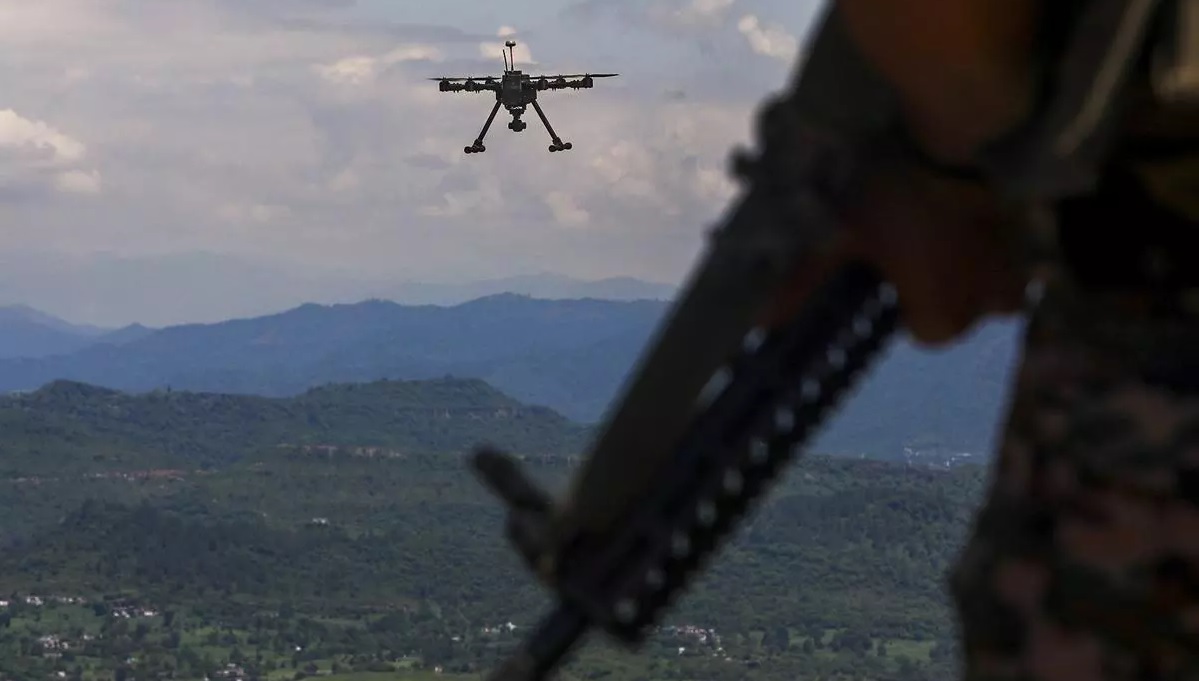 India's Defence Ministry Warns Against Chinese Parts in Military Drones Amid Security Concerns
India's Defence Ministry Warns Against Chinese Parts in Military Drones Amid Security Concerns
-
 Pakistan Announces 15% Increase in Defence Budget for 2024-25 Amid Economic Crisis
Pakistan Announces 15% Increase in Defence Budget for 2024-25 Amid Economic Crisis
-
 China’s Super Radar Detects Mysterious Plasma Bubble Over Giza Pyramids
China’s Super Radar Detects Mysterious Plasma Bubble Over Giza Pyramids
-
 India's Indigenous Kaveri Engine Program with New Focus on Thrust and Performance
India's Indigenous Kaveri Engine Program with New Focus on Thrust and Performance
-
 Isro Draws up Ambitious Plan for 2024, says will Launch at Least 12 Missions
Isro Draws up Ambitious Plan for 2024, says will Launch at Least 12 Missions
-
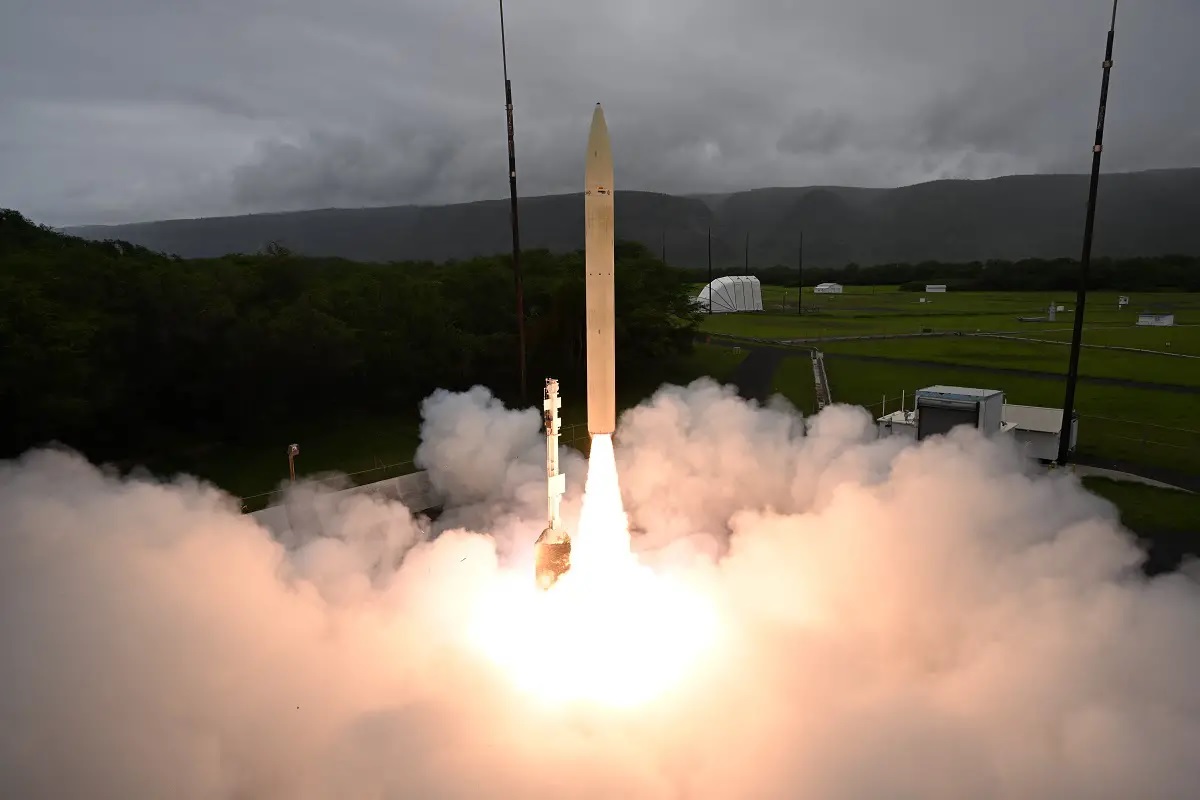 Successful Hypersonic Missile Test by U.S. Department of Defense
Successful Hypersonic Missile Test by U.S. Department of Defense
Top Trending in 4 Days
-
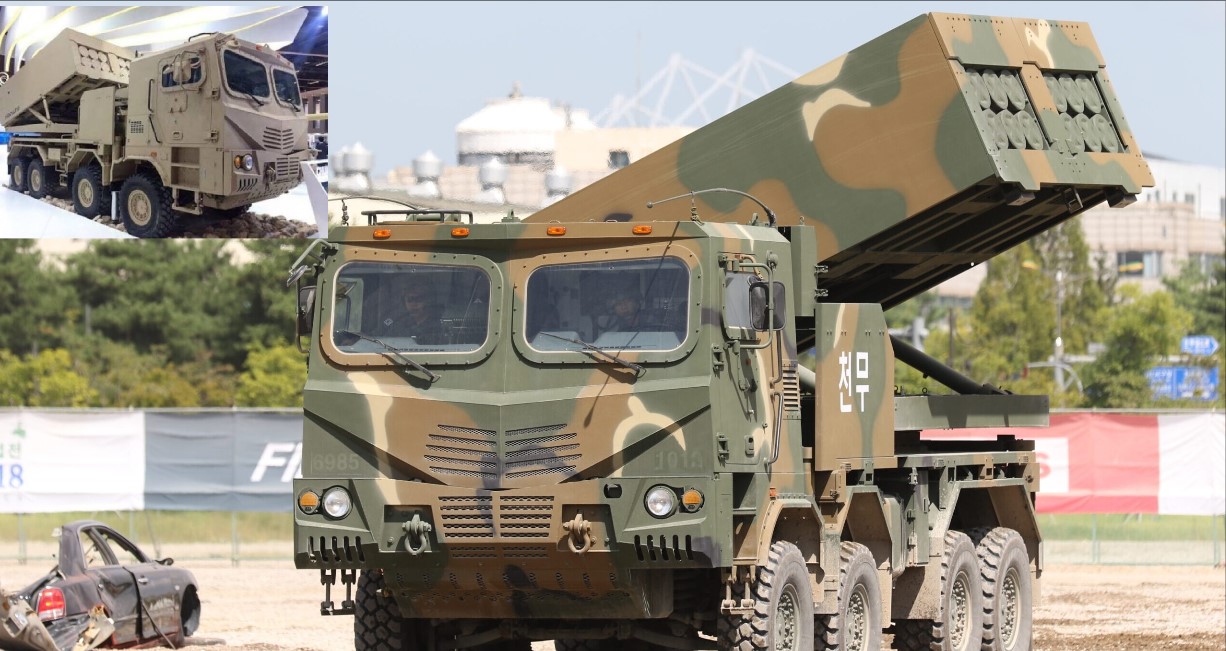 South Korea’s K239 Chunmoo Rocket Artillery Spotted in Saudi Arabia
South Korea’s K239 Chunmoo Rocket Artillery Spotted in Saudi Arabia
-
 Russia Launches Massive Missile and Drone Attacks on Ukraine's infrastructure
Russia Launches Massive Missile and Drone Attacks on Ukraine's infrastructure
-
 Peru to Acquire South Korea's K2 Black Panther Tanks
Peru to Acquire South Korea's K2 Black Panther Tanks
-
 Taiwan Strengthens Communication Resilience with LEO Satellites, Make War-Proof its communications networks
Taiwan Strengthens Communication Resilience with LEO Satellites, Make War-Proof its communications networks
-
 Advancing Space Tech for Defense: ICEYE Leads Finland's F-35 Industrial Participation Program
Advancing Space Tech for Defense: ICEYE Leads Finland's F-35 Industrial Participation Program
-
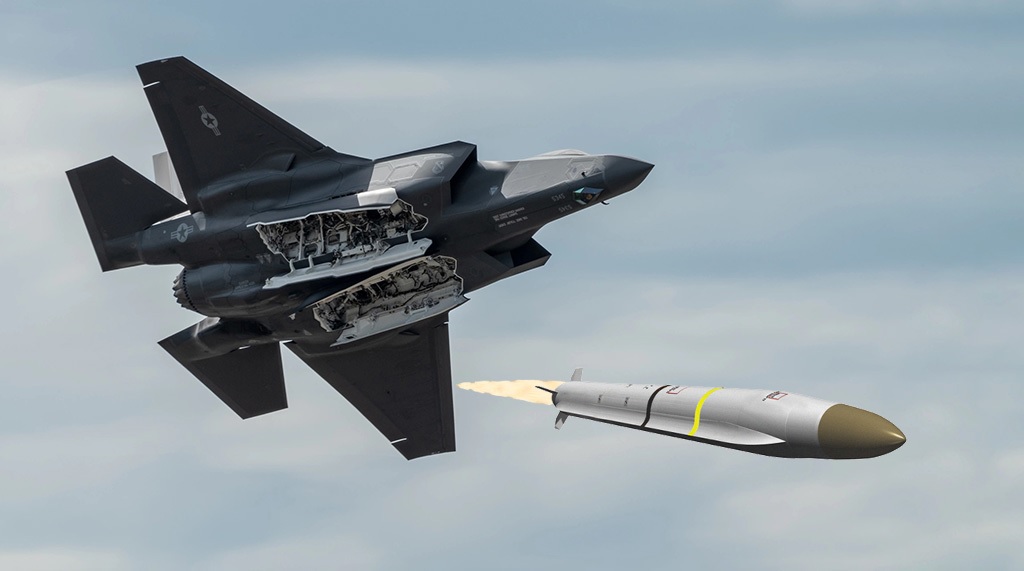 Northrop Grumman Delivers Advanced SiAW Missile for U.S. Air Force Testing
Northrop Grumman Delivers Advanced SiAW Missile for U.S. Air Force Testing
-
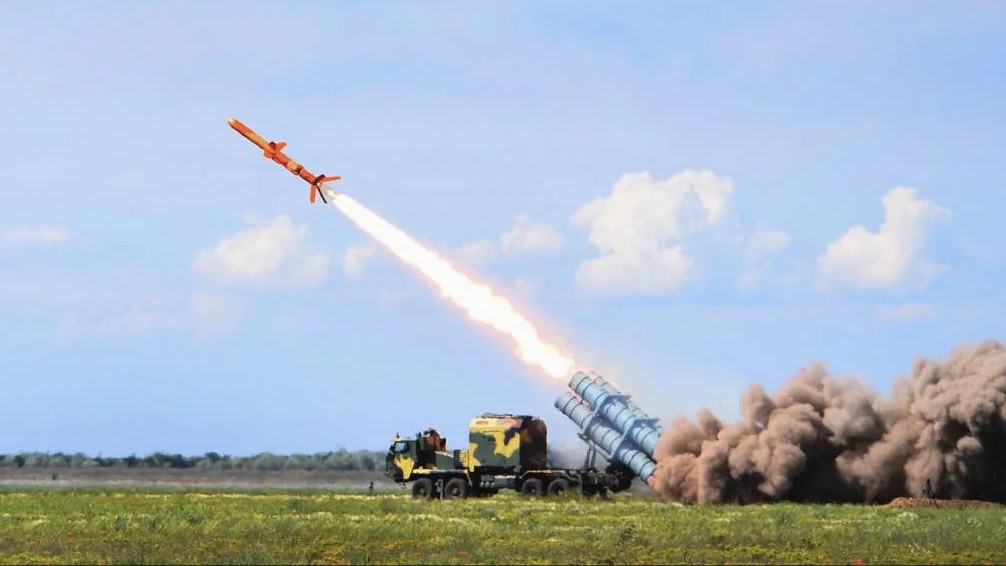 Ukraine Scales Up Neptune Missile Production: Over 100 Units Manufactured with Enhanced Range
Ukraine Scales Up Neptune Missile Production: Over 100 Units Manufactured with Enhanced Range
-
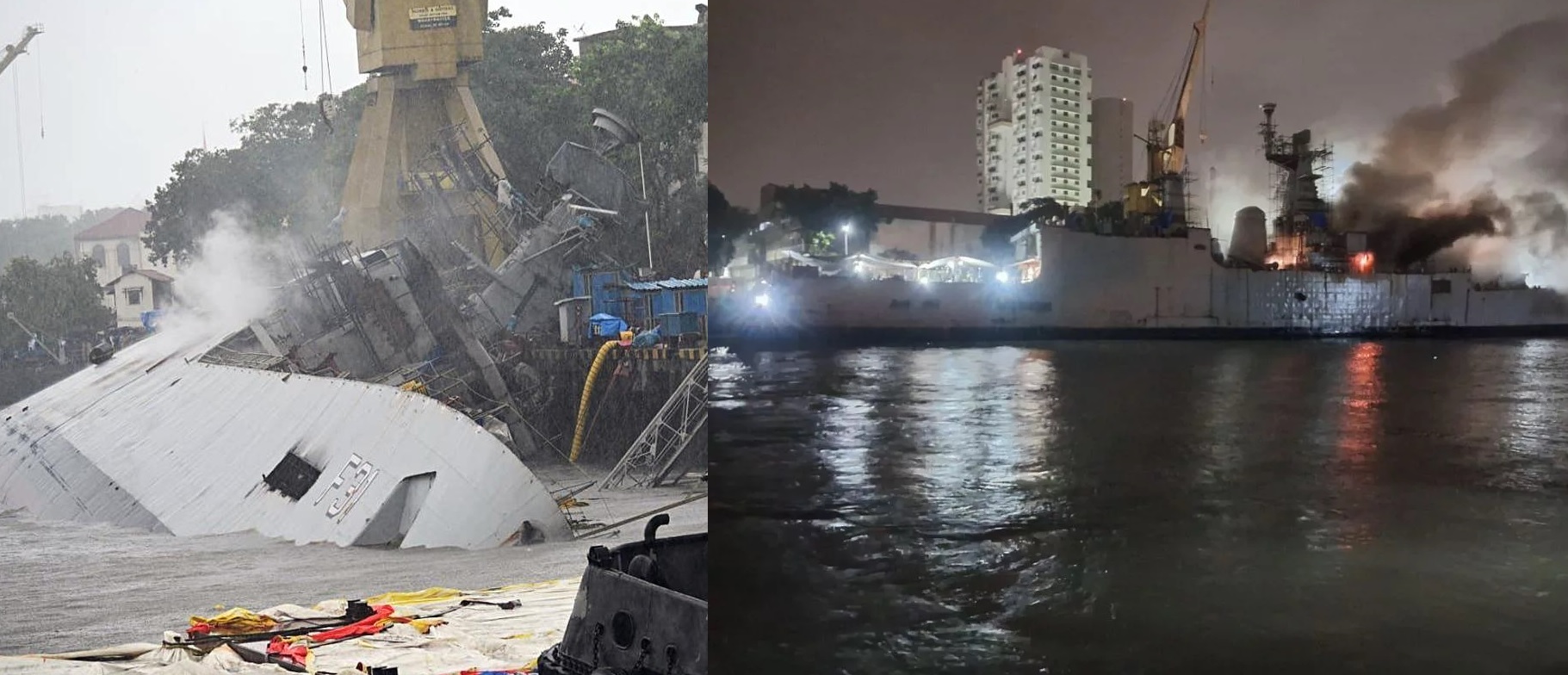 INS Brahmaputra Righted with Balloon-Like Technology After Fire Devastation, Full Restoration Months Away
INS Brahmaputra Righted with Balloon-Like Technology After Fire Devastation, Full Restoration Months Away


